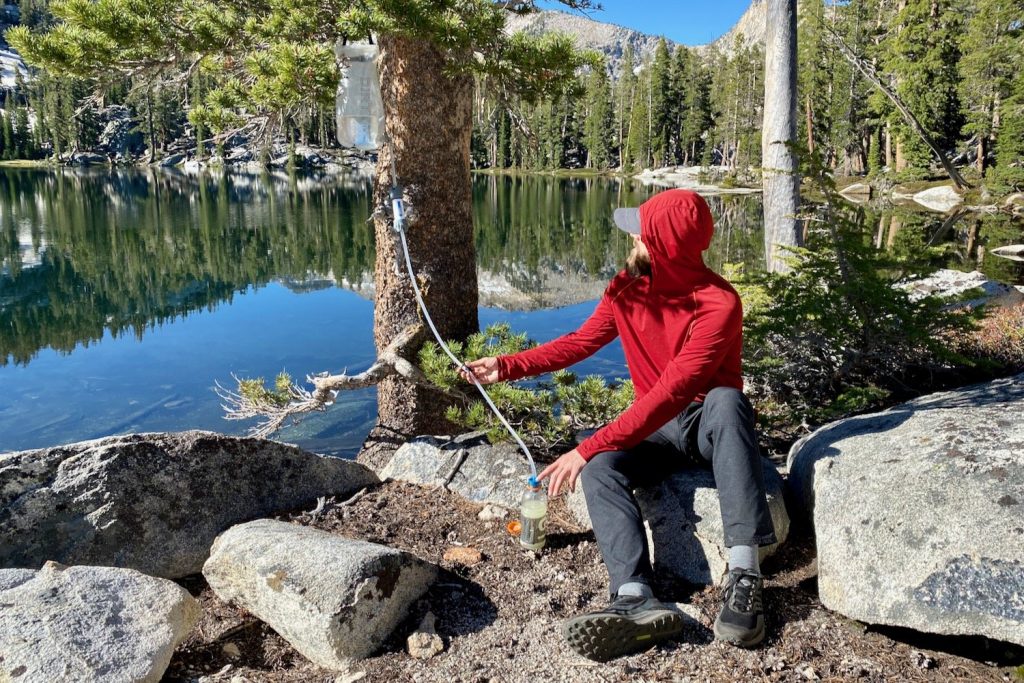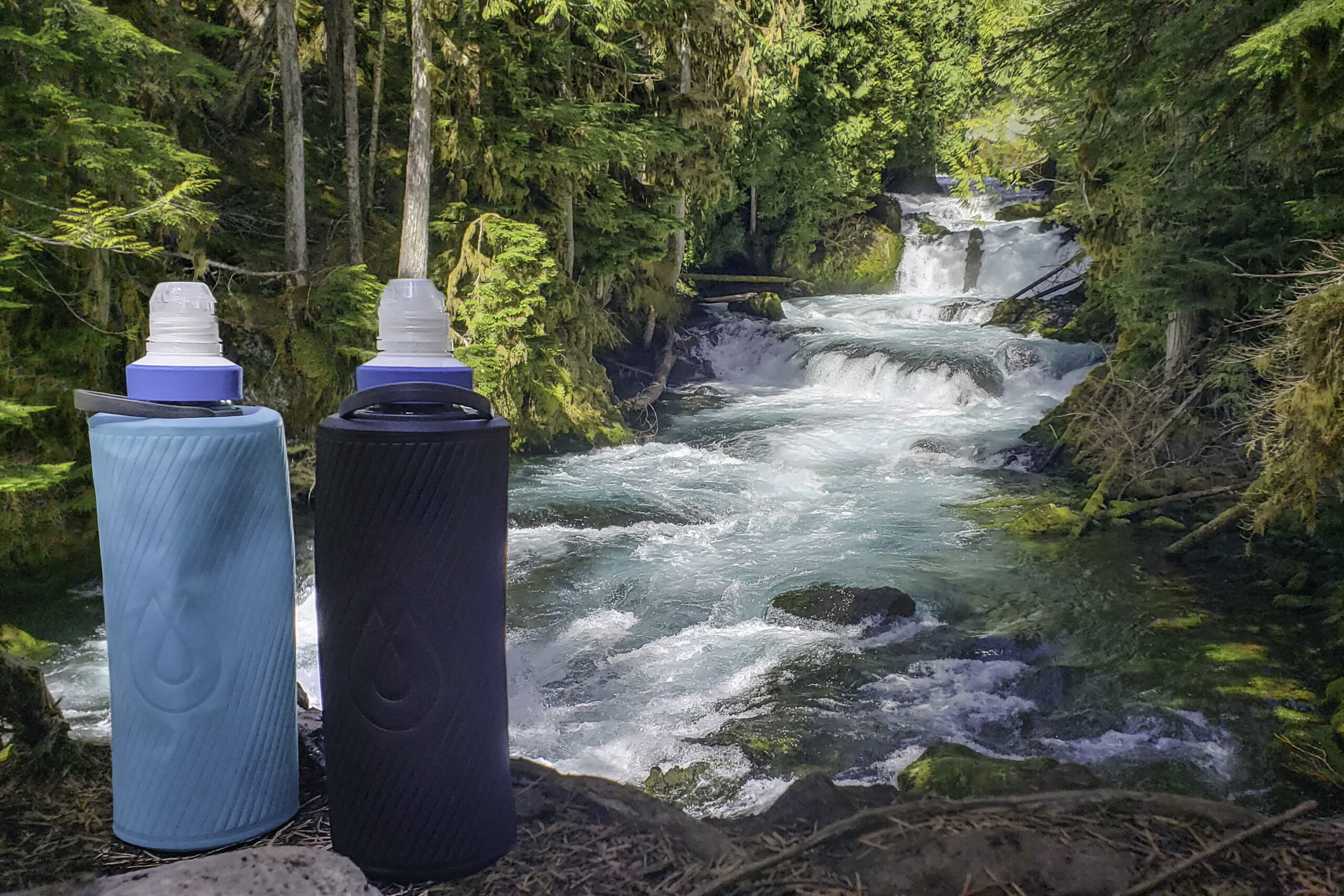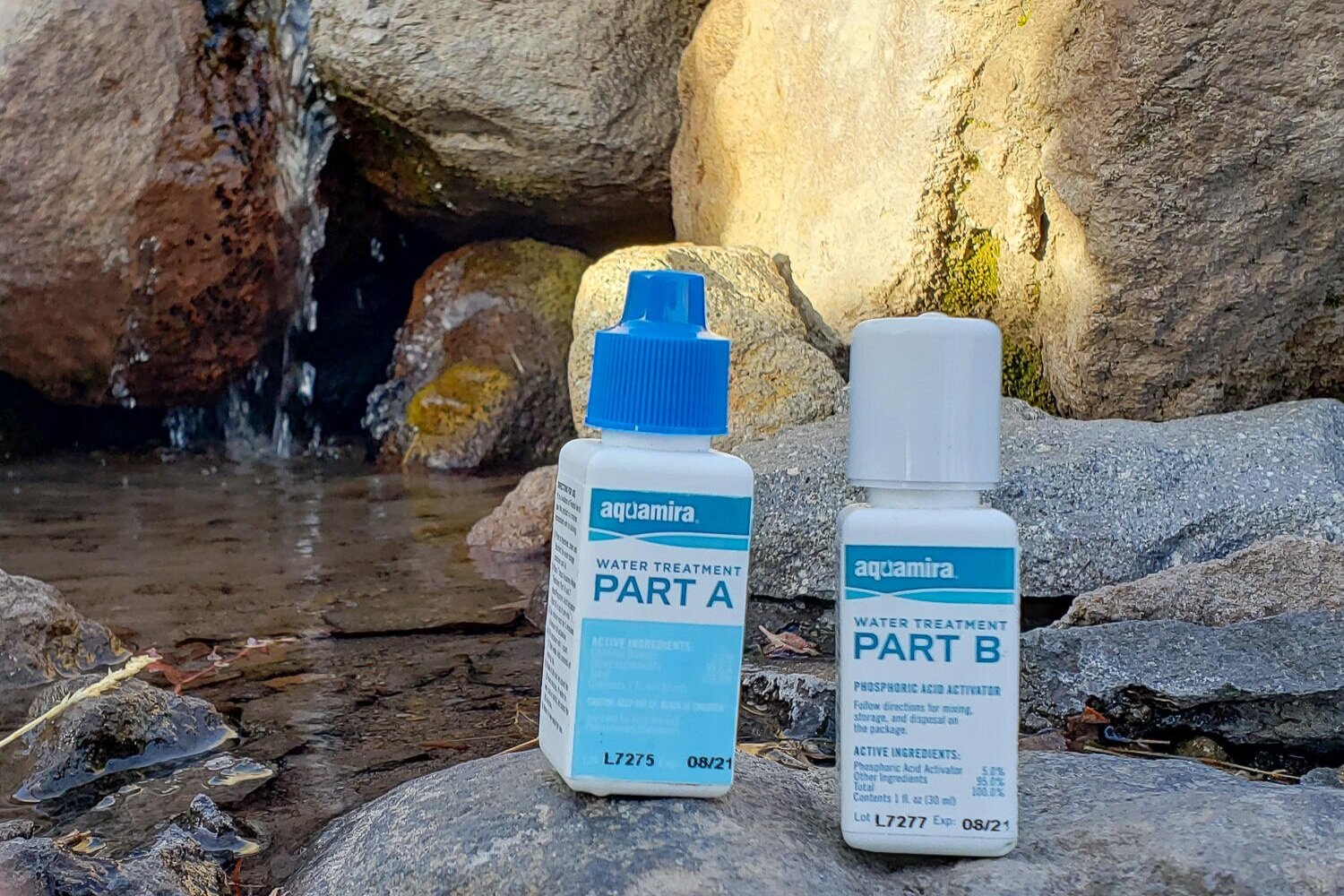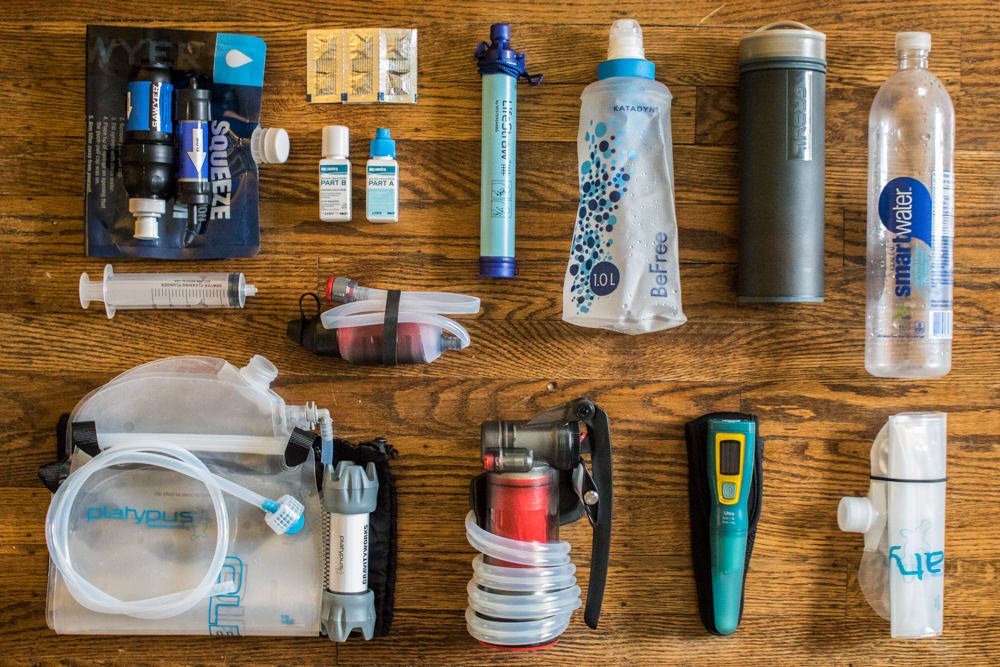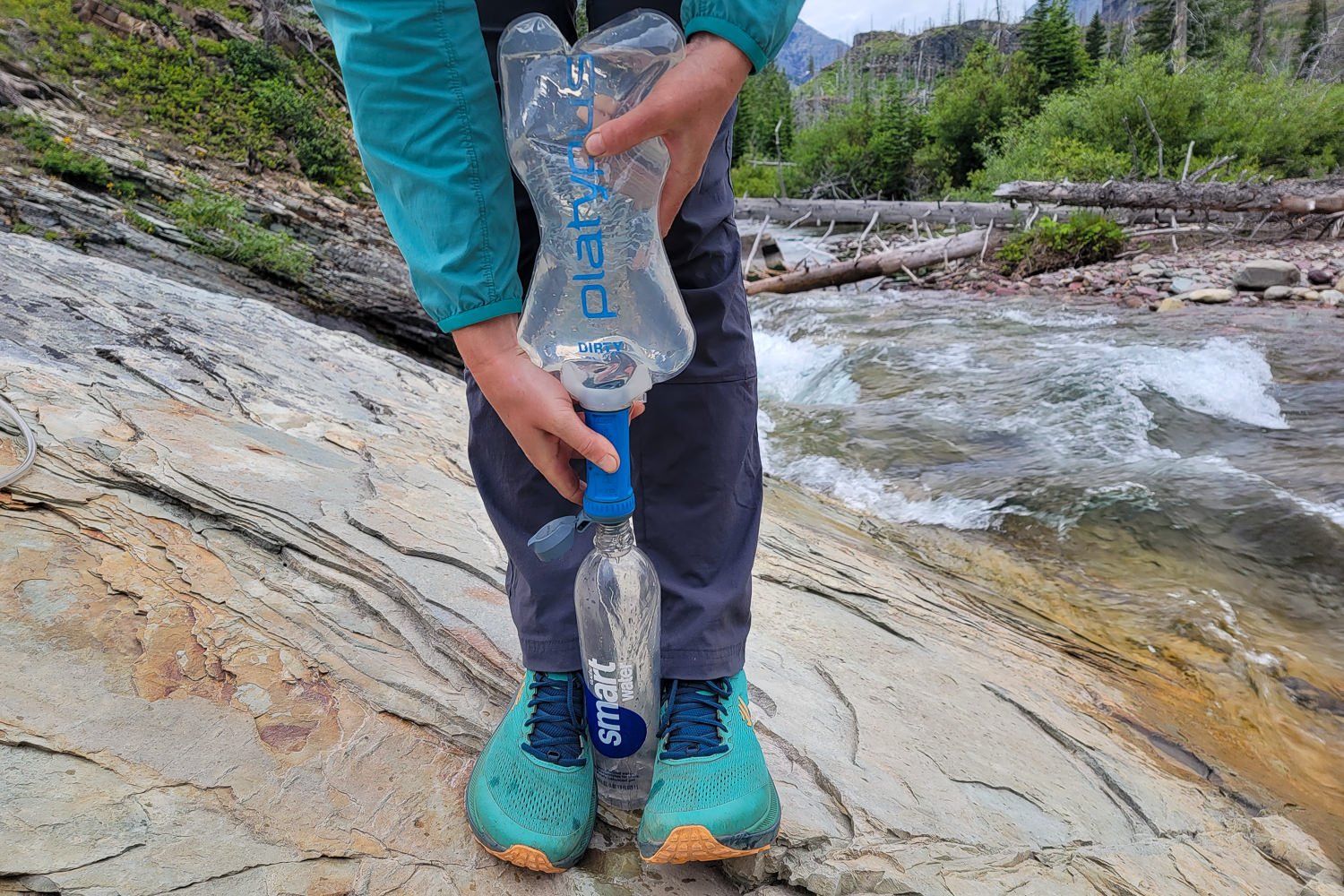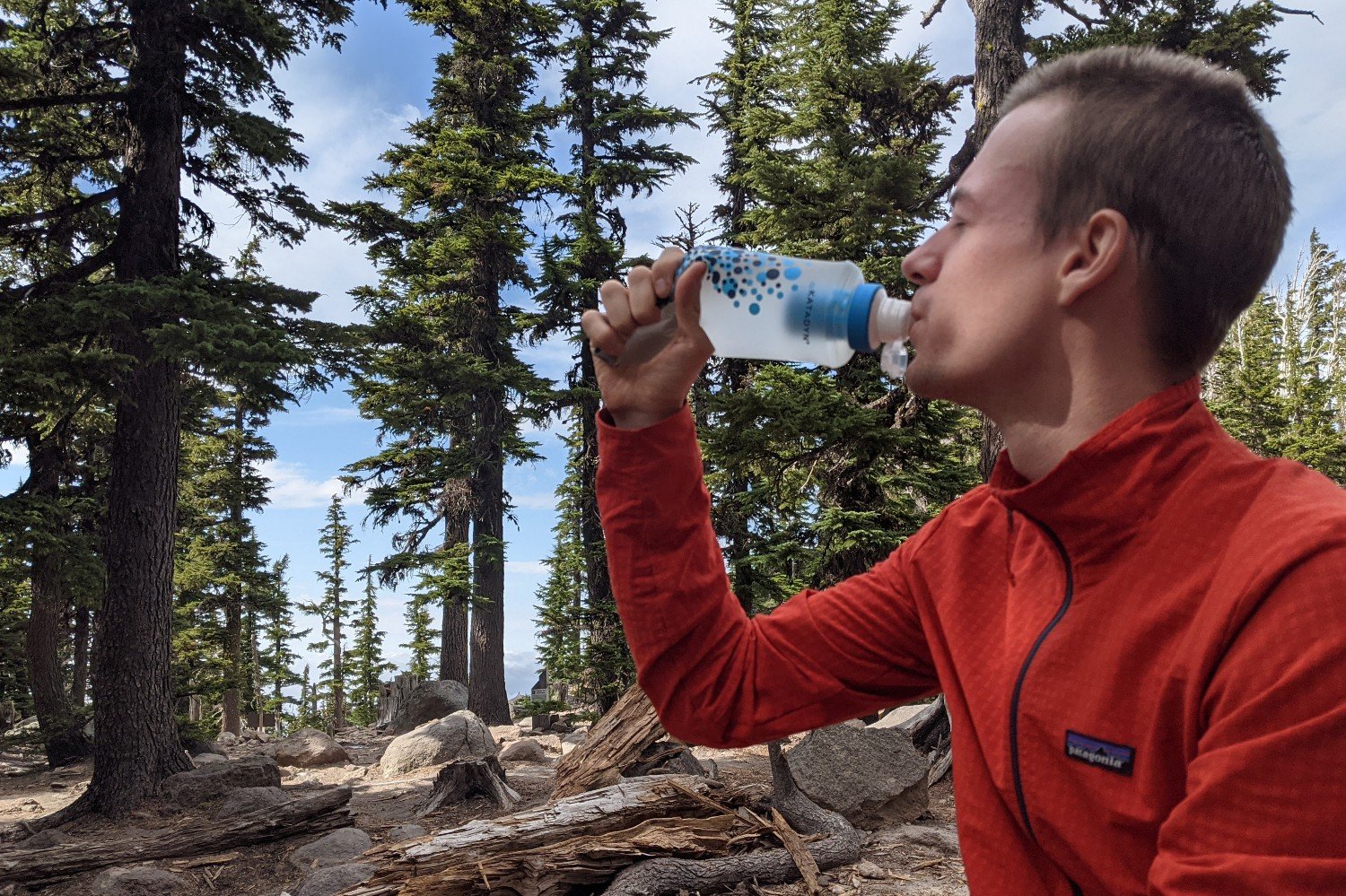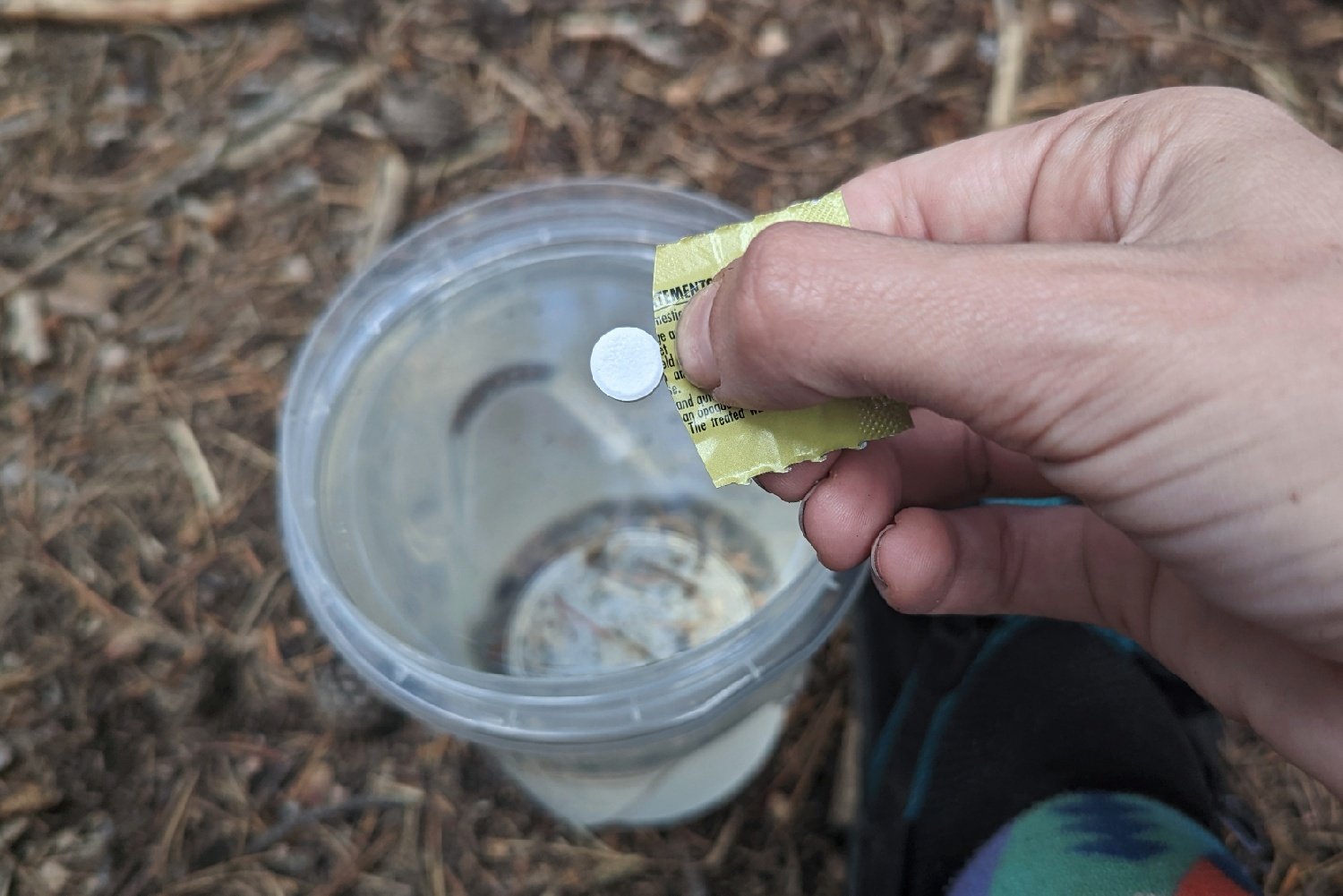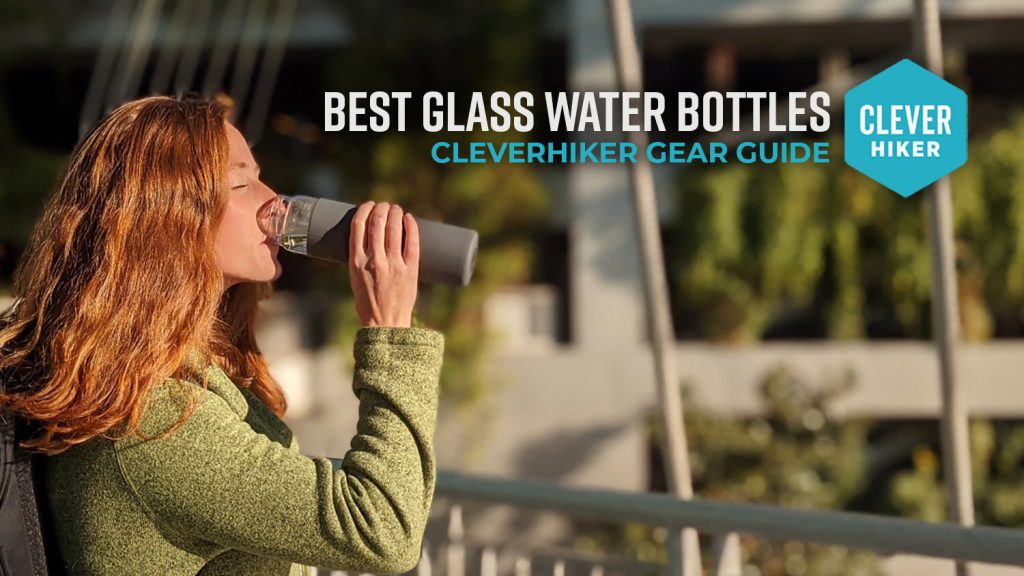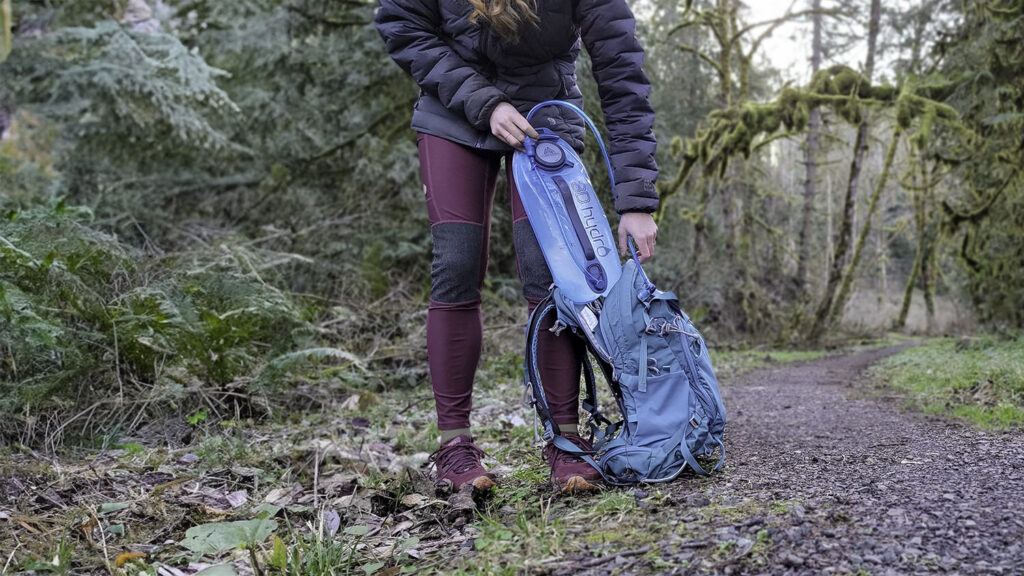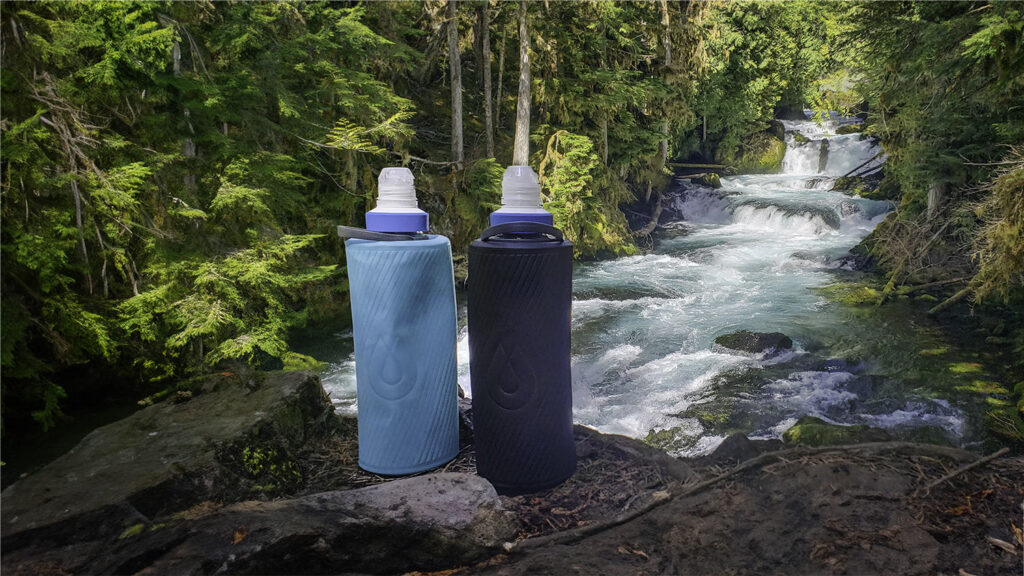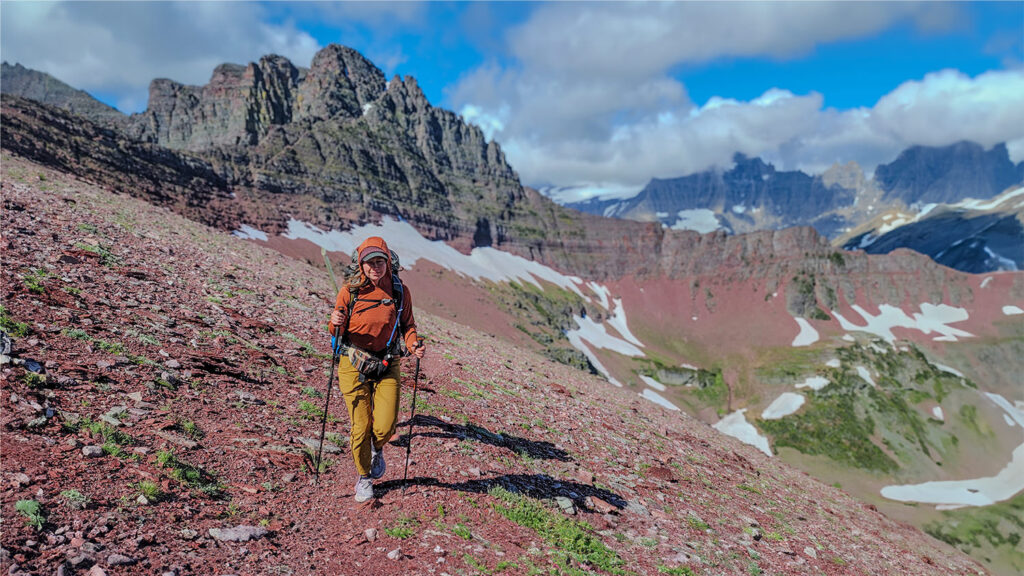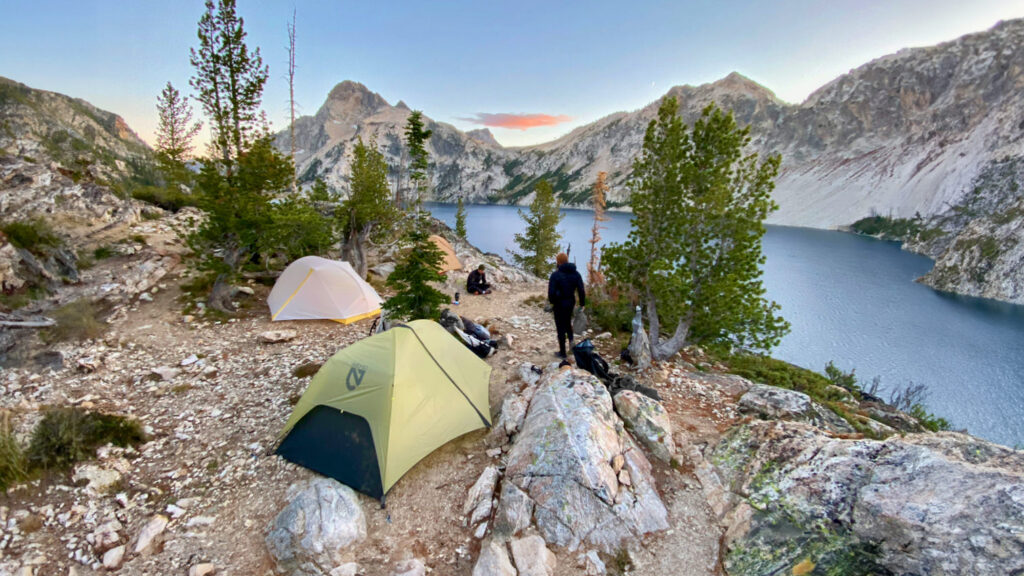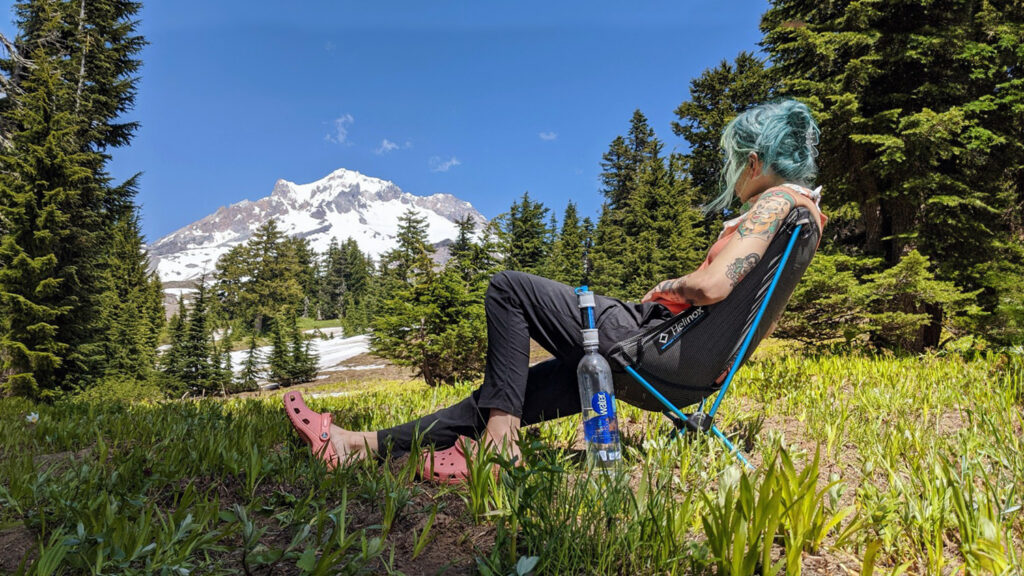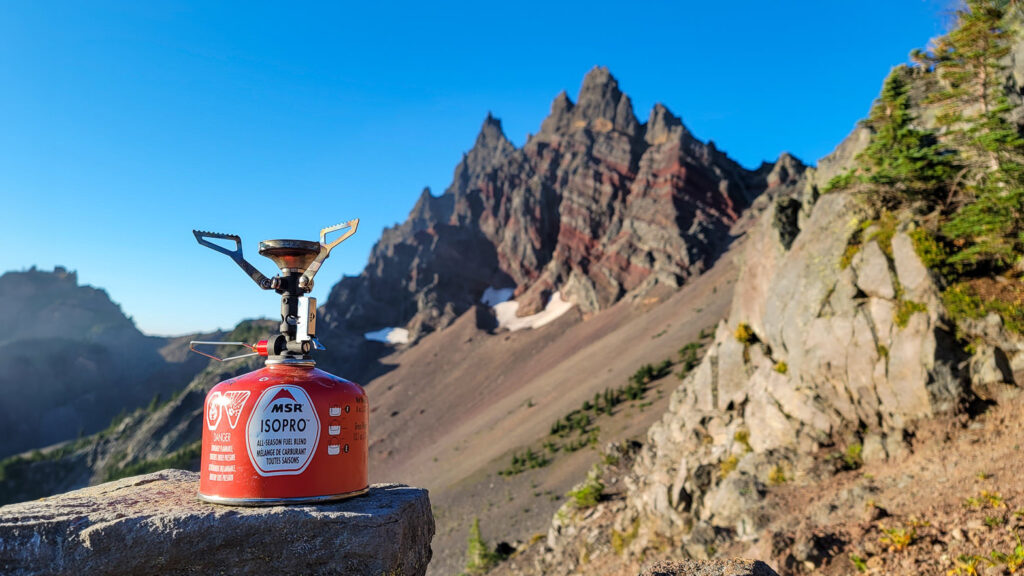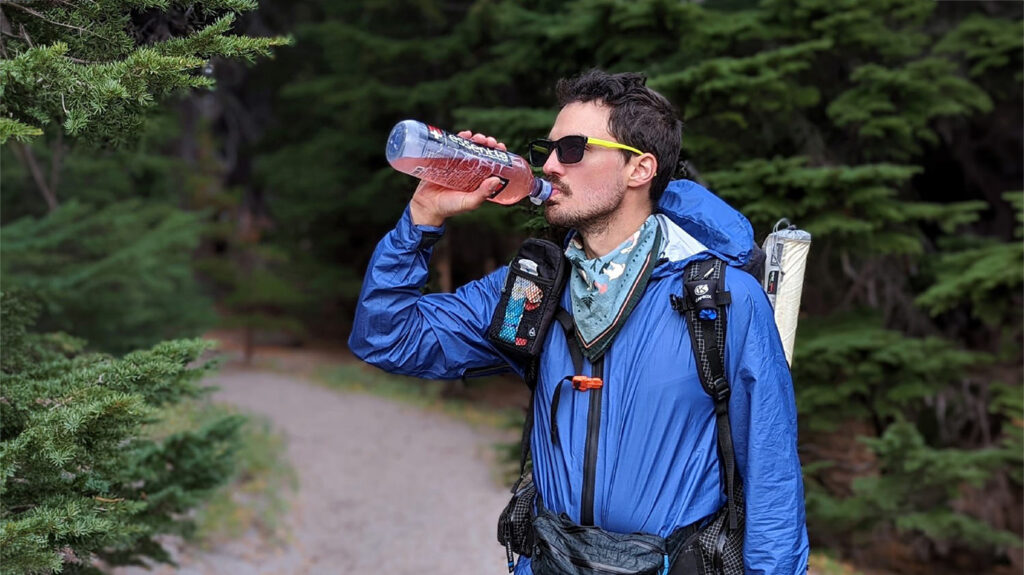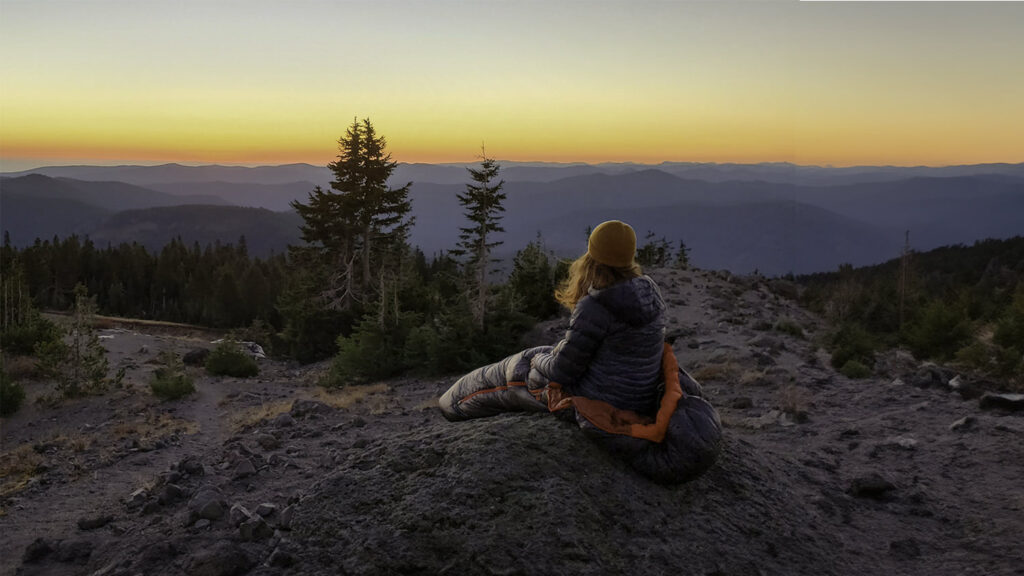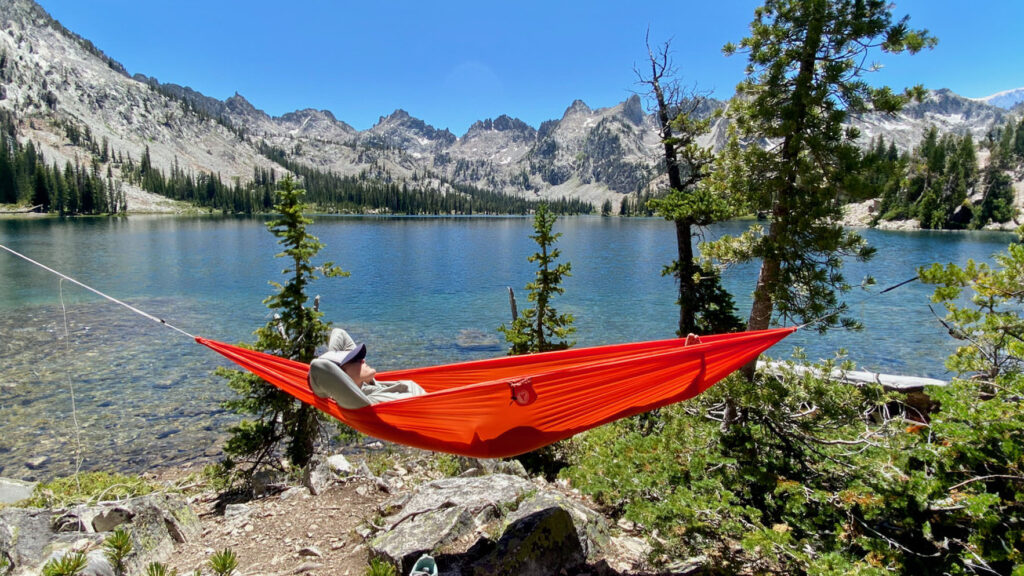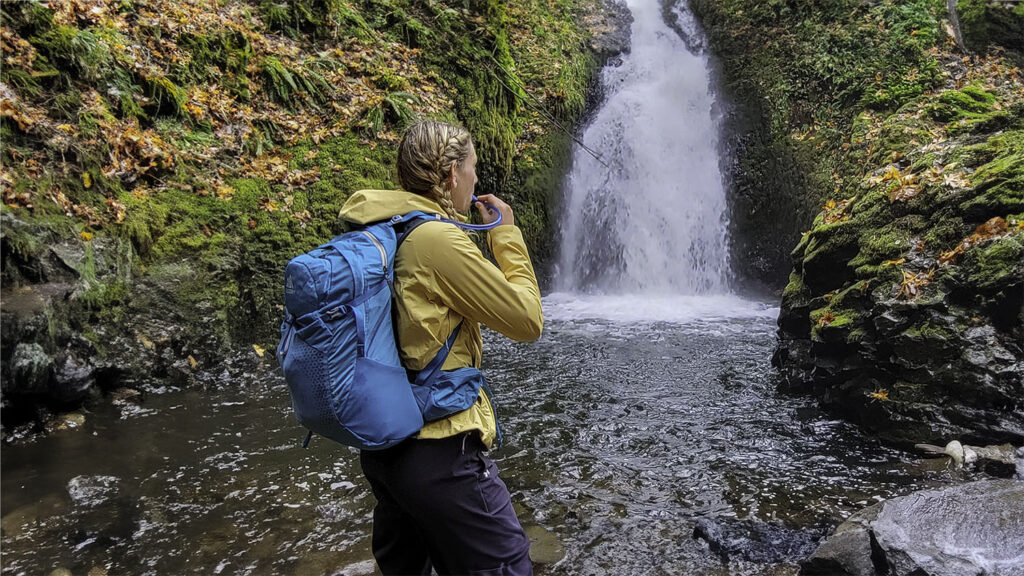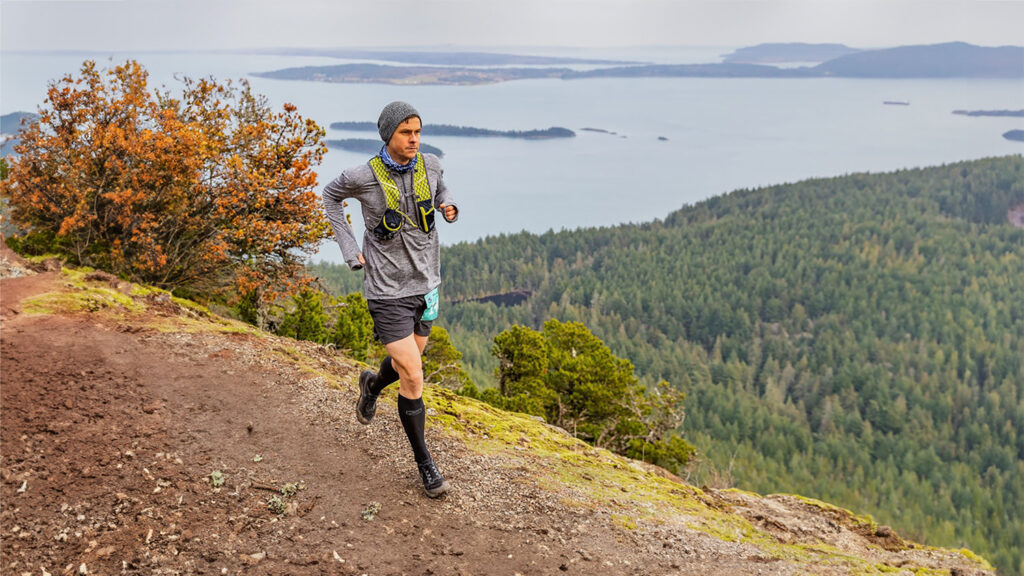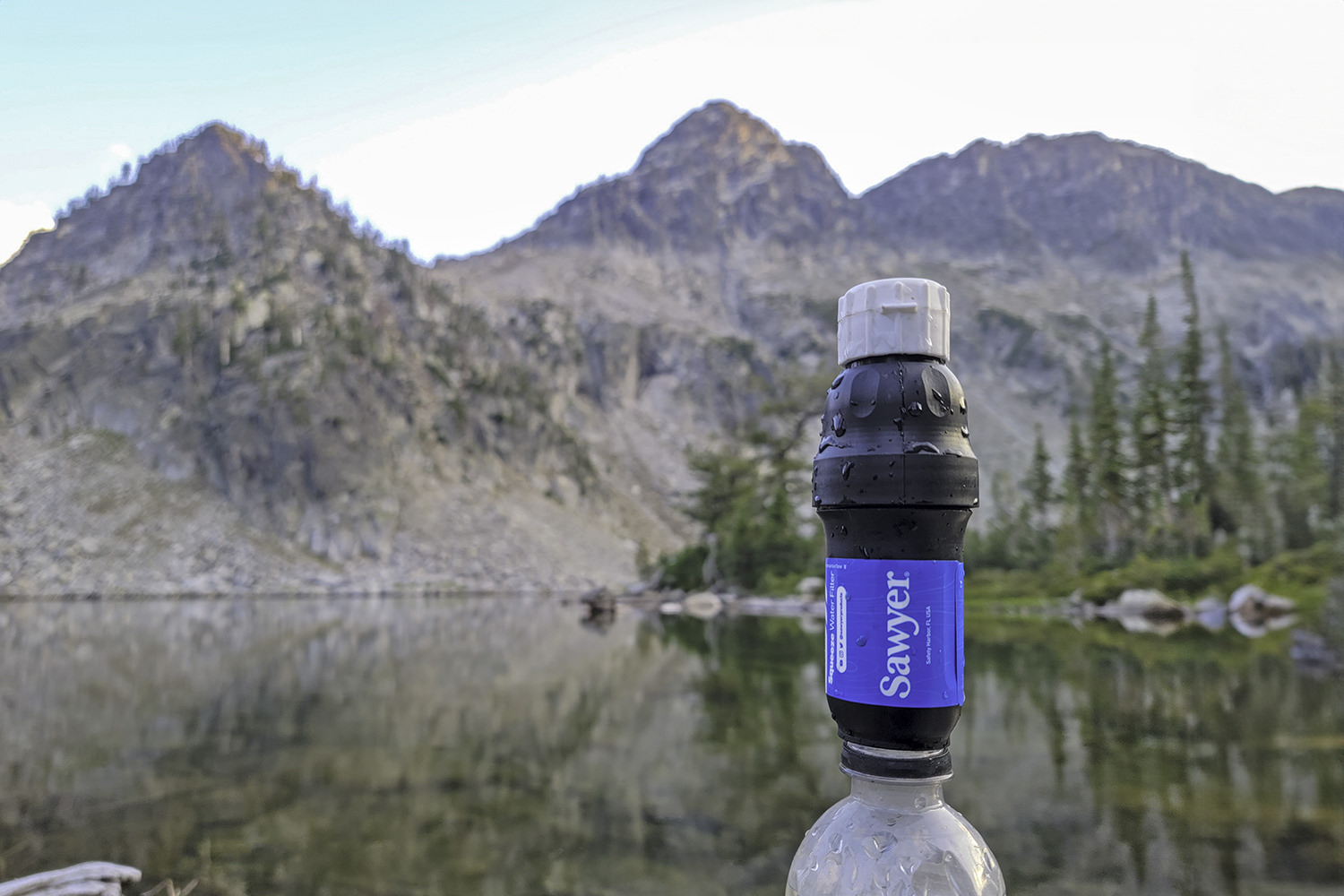
Clean drinking water is an incredibly important consideration for any trip into the backcountry. If you’ve ever had the pleasure of experiencing a stomach parasite (we have, it’s awful), then you already know how critical filtering is. If you haven’t, good! Let’s keep it that way.
We’ve used just about every type of filtration and purification method available in our 20,000 miles of hiking over the past decade. Whether you’re looking for ultralight filtration for your next big adventure or a reliable purifier for overseas travel, our team of experts will help you find the perfect water treatment for your needs.
To complete your backcountry hydration setup, you should also take a look at our reviews of the best hydration bladders and water bottles. And if you want to cover up that funky taste, we also have you covered with our guide to the best hydration mixes.
Quick Picks for Water Filters
Check out this quick list of our favorite water filters, or continue scrolling to see our full list with in-depth reviews.
Best water filter overall: Sawyer Squeeze ($41)
Best ultralight water filter: Katadyn BeFree ($45)
Best gravity water filter for group camping & backpacking: Platypus GravityWorks ($135)
Best chemical water purification: Katadyn Micropur Tablets ($16)
Durable squeeze filter with a high-quality reservoir: Platypus QuickDraw ($55)
Best UV light water purifier: Katadyn Steripen Ultra ($130)
Lightweight filter that works well in shallow water sources: MSR Trail Shot ($63)
Best filter for purifying the worst of the worst water: MSR Guardian ($390)
What’s new
We consistently switch up which water filtration method we take on our backpacking trips so we can compare our old favorites against new products. We’ve added some new reviews with long-term testing results:
- We’ve added full reviews of the most popular chemical water treatments. Check out our review of Katadyn Micropur Tabs here and Aquamira Drops here.
- We published a full review of the Platypus Quickdraw.
- There’s now a full review of the Platypus Gravityworks.
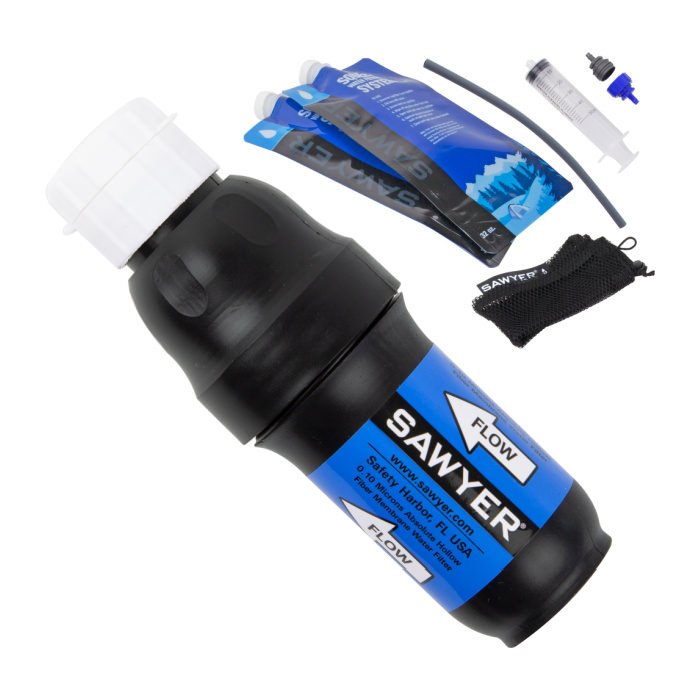
Sawyer Squeeze
Best water filter overall
Price: $41
Weight: 3 oz. (including a 32 fl. oz. pouch)
Pros
- Ultralight
- Compact
- Affordable
- Quick & easy to use
- Great flow rate
- Fits a variety of bottels
Cons
- Squeezing can get annoying
- Pouches lack durability
- Requires syringe to backflush
The Sawyer Squeeze is the filter we take on almost all of our backpacking trips because it’s ultralight, compact, and doesn’t leave a weird taste like chemical treatments.
It can be used in a variety of different ways, but we typically pair the Squeeze with a smartwater bottle because it makes for an ultralight and decently durable water filter system. The bags that come with the Squeeze tend to wear down over time, so we recommend squeezing from your smartwater bottle instead or carrying a replacement squeeze bag.You can also just drink from your water bottle directly through the filter, which is often what we do.
Sawyer also makes this filter in the slightly smaller Micro and the lighter and more affordable Mini versions, which are also popular.
Check out our full review of the Squeeze here and the Micro here.
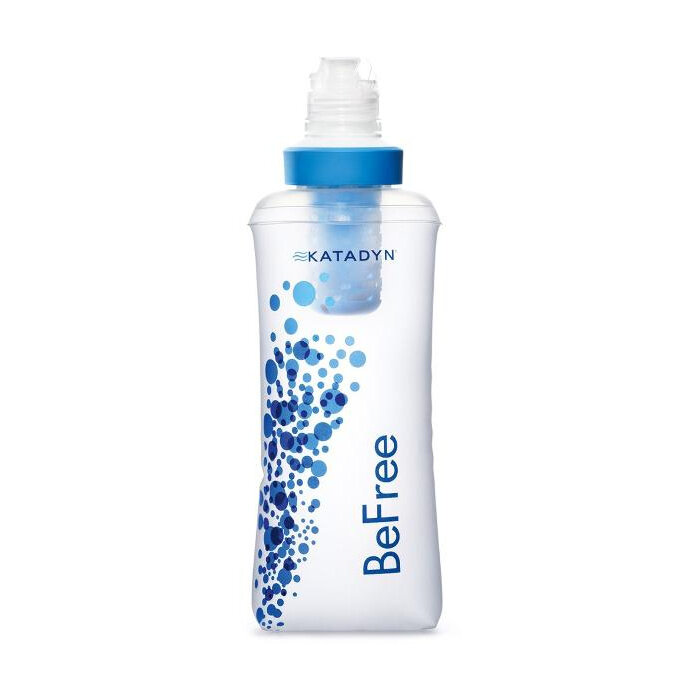
Katadyn BeFree
Best ultralight water filter
Price: $45 (1 L)
Weight: 2.3 oz. (including 1 L soft bottle)
Pros
- Affordable
- Ultralight
- Compact
- Quick & easy to use
- Great flow rate
Cons
- Bottle lacks durability
- Flimsy sports cap
- Limited bottle compatibility
- Microfilter may not last as long as others
The Katadyn BeFree is an affordable, lightweight filter that has an incredible flow rate for how small it is. You can drink directly from this filter while you’re on the go thanks to its sports bottle-style top.
We don’t find the bottle to be reliable enough for repeated use over time, so we prefer to pair our BeFree with the more durable and versatile Hydrapak Flux soft water bottle. If you choose to go this route, you can save a few bucks by purchasing the replacement filter only which doesn’t include the BeFree bottle.
The Katadyn BeFree is a great choice for ultralight backpackers looking for a fast alternative to traditional pump, squeeze, and gravity filters.
Check out our full review of the Katadyn BeFree here.
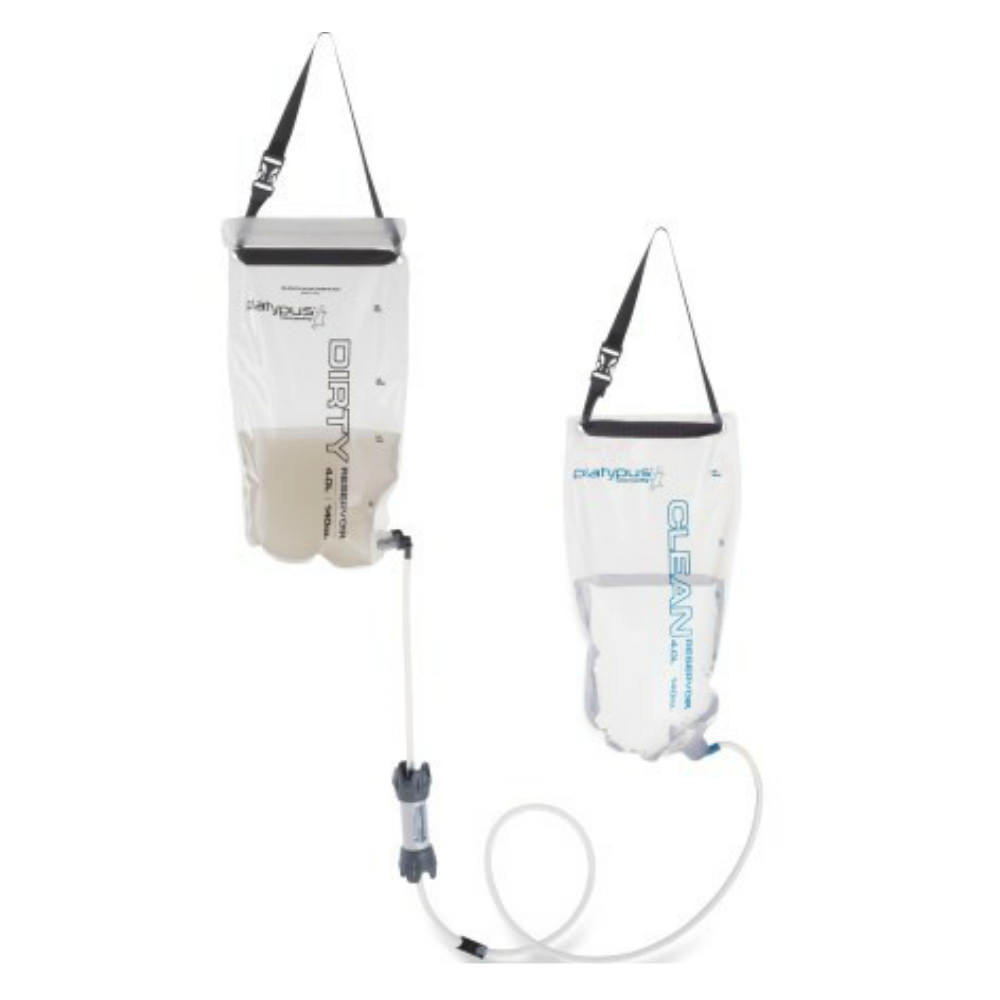
Platypus GravityWorks
Best gravity water filter for group camping & backpacking
Price: $135
Weight: 3.6 oz. (including 1 L reservoir)
Pros
- Very convenient
- Good for pairs & groups
- Quick
- Can filter a large amount of water at once
Cons
- Heavy
- Bulkier than some
- Expensive
- Slows down over time
The convenience of the Platypus GravityWorks is tough to beat, especially for pairs or groups. To use the GravityWorks, simply fill up the “dirty” water bag, hang it above the “clean” bag, and let gravity do its thing.
The main benefit? No tedious pumping or squeezing is required. This is especially beneficial for parties with multiple people since filtering a lot of water can quickly become obnoxious.
The Gravityworks is heavier than most of the other options on our list, so we only take it when we can share the weight with a partner.
Full Review: Platypus GravityWorks Filter
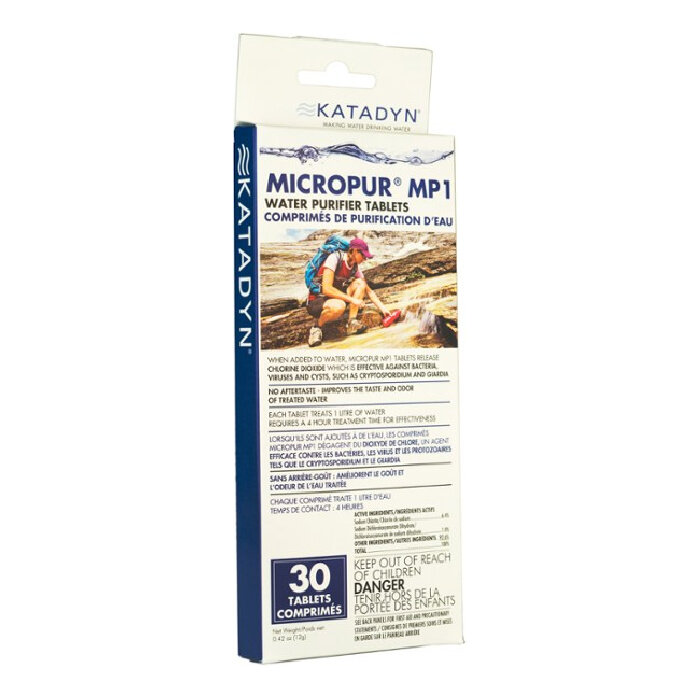
Chlorine Dioxide Drops & Pills
Best chemical water purification
Price: $15 / $16
Weight: 2 oz. / 0.9 oz.
Pros
- Ultralight
- Compact
- Easy to use
- Affordable
- Kills viruses
- Compact
Cons
- Wait time necessary
- May affect the taste of your water
Whether you’re looking for the lightest possible method of water purification or a backup to use in case your filter breaks, chlorine dioxide in pill form and drop form is probably your best bet.
We love this treatment method because it’s affordable, easy to use, and nearly hassle free. We hardly notice any taste or smell with chlorine dioxide, but a short waiting time is required for it to work properly (keep in mind that both drops and pills require extra time to kill cryptosporidium, a rare parasite).
The pills are easier to use, but they impart more taste. The drops are more affordable per liter, but they weigh a bit more and require a little extra prep. Whichever method you go with, we recommend throwing a packet of hydration mix in after to counteract any chemical taste.
Check out our full review of Katadyn Micropur tabs here and Aquamira Drops here.
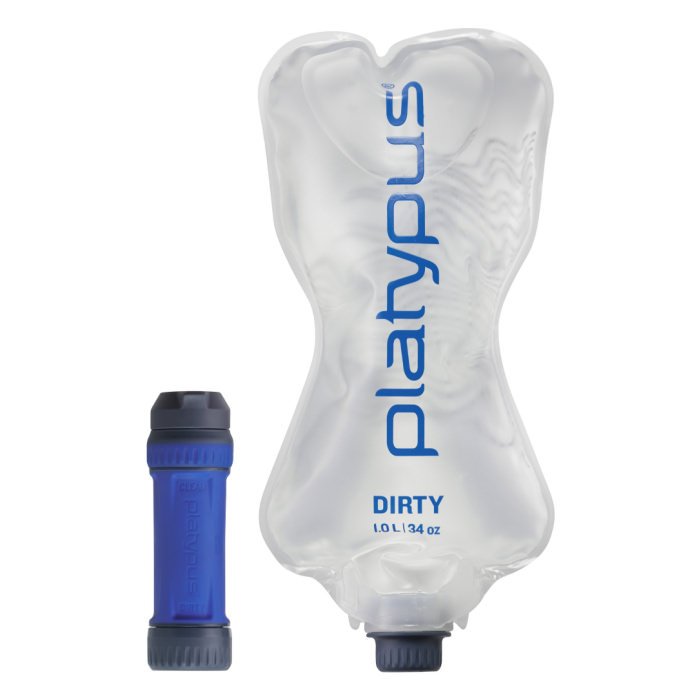
Platypus QuickDraw
Durable squeeze filter with a high-quality reservoir
Price: $50
Weight: 3.6 oz. (including 1 L reservoir)
Pros
- Ultralight
- Compact
- Quick & easy to use
- Durable
- Great flow rate
- High-quality reservoir
- Easy to backflush & check integrity
- Fits a variety of bottles
Cons
- Squeezing can get annoying
- Slows down over time
The Platypus QuickDraw MicroFilter System is one of the most durable squeeze filters on the market, so it’s a great choice for thru-hikers or anyone who’s tough on gear.
The reservoir that comes with the QuickDraw is sturdy, taste-free, and has a convenient handle that makes filling it easy. It’s a significant step up in quality from the reservoirs included with the Sawyer Squeeze and Katadyn BeFree. The filter cartridge has dual threads as well, so the QuickDraw can be attached to a Smartwater bottle and a variety of other containers.
The QuickDraw’s flow rate is excellent, and right on par with the leading competition. While Platypus’s three liters per minute claim feels like a stretch to us, we’re still happy with this filter’s performance – we can squeeze one liter of water in about 40 seconds.
The QuickDraw (3.6 oz.) is slightly heavier than the Sawyer Squeeze (3 oz.) and Katadyn BeFree (2.3 oz.), which we view as a minor downside. That said, its tough build, fast flow rate, premium reservoir, and versatility with various bottles help make up for the small weight increase. Overall, the QuickDraw is an excellent filtration option for outdoor adventures.
Check out our full review of the QuickDraw to see it in action.
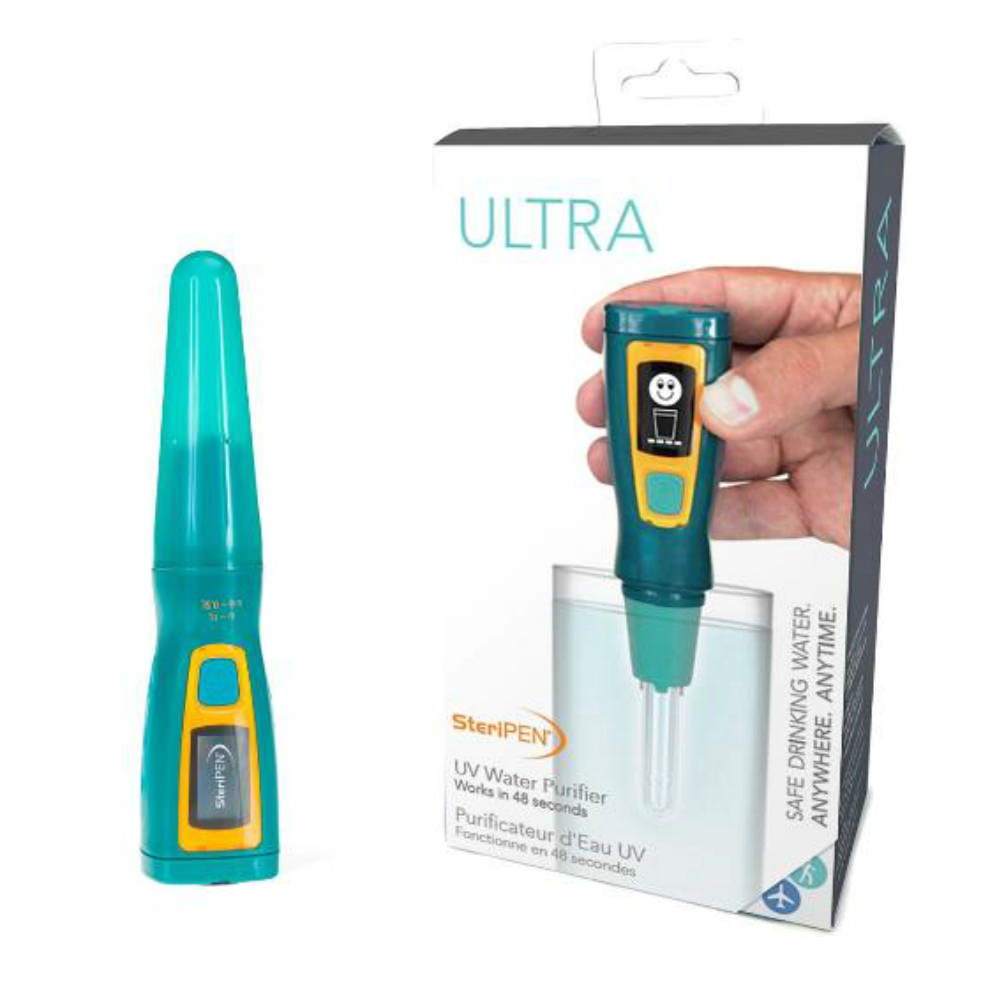
Katadyn Steripen Ultra
Best UV light water purifier
Price: $130
Weight: 5 oz.
Pros
- Lightweight
- Compact
- Quick & easy to use
- Kills viruses
Cons
- Expensive
- Batteries can fail
- Won’t work in murky water
We love the convenience and speed of the Katadyn Steripen Ultra UV light purifier. When paired with a small-mouth, 1L plastic bottle (ex: smartwater), the Ultra is just about the fastest and easiest water treatment method we’ve ever used. Simply place the Ultra in your water bottle, flip it upside down, gently agitate for 90 seconds, and you’ve got a clean liter of water.
We don’t love that the Ultra is battery powered, but we’ve grown to trust it over time. We can purify about 5 days of water for 2 people (50+ liters) with the Ultra’s rechargeable internal battery.
The biggest downside with UV treatments is that they don’t work in murky water, so we always carry backup pills and a pre-filter (pantyhose also work just fine) just in case.
Check out our full review of the Ultra here.
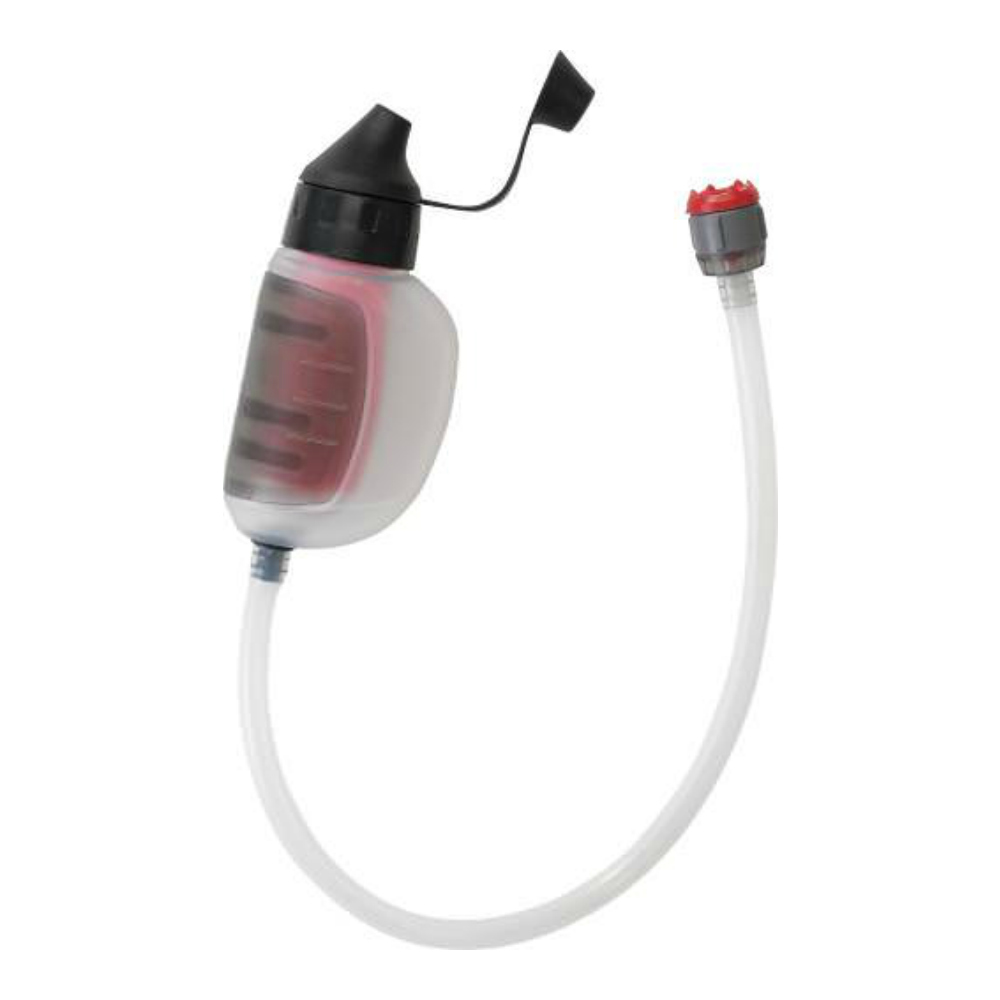
MSR Trail Shot
Lightweight filter that works well in shallow water sources
Price: $63
Weight: 5.2 oz.
Pros
- Lightweight
- Good for shallow sources
Cons
- Hand pumping can get annoying
The MSR Trail Shot is a lightweight hand pump filter with the ability to pump water from shallow streams and puddles.
You can drink straight from the Trail Shot or you can use it to fill bottles. For added convenience, it can even be paired with a water tube to easily fill bottles and bladders.
Like most pump/squeeze filters, hand squeezing 4-6 liters per day with the Trail Shot can get annoying, but it’s not as bad as some more traditional hand pump filters we’ve used.
The Trail Shot has a short intake tube, so you’ll have to hunker down close to sources for pumping, but again it’s one of the few that can pull water from shallow sources without the need for a scoop.
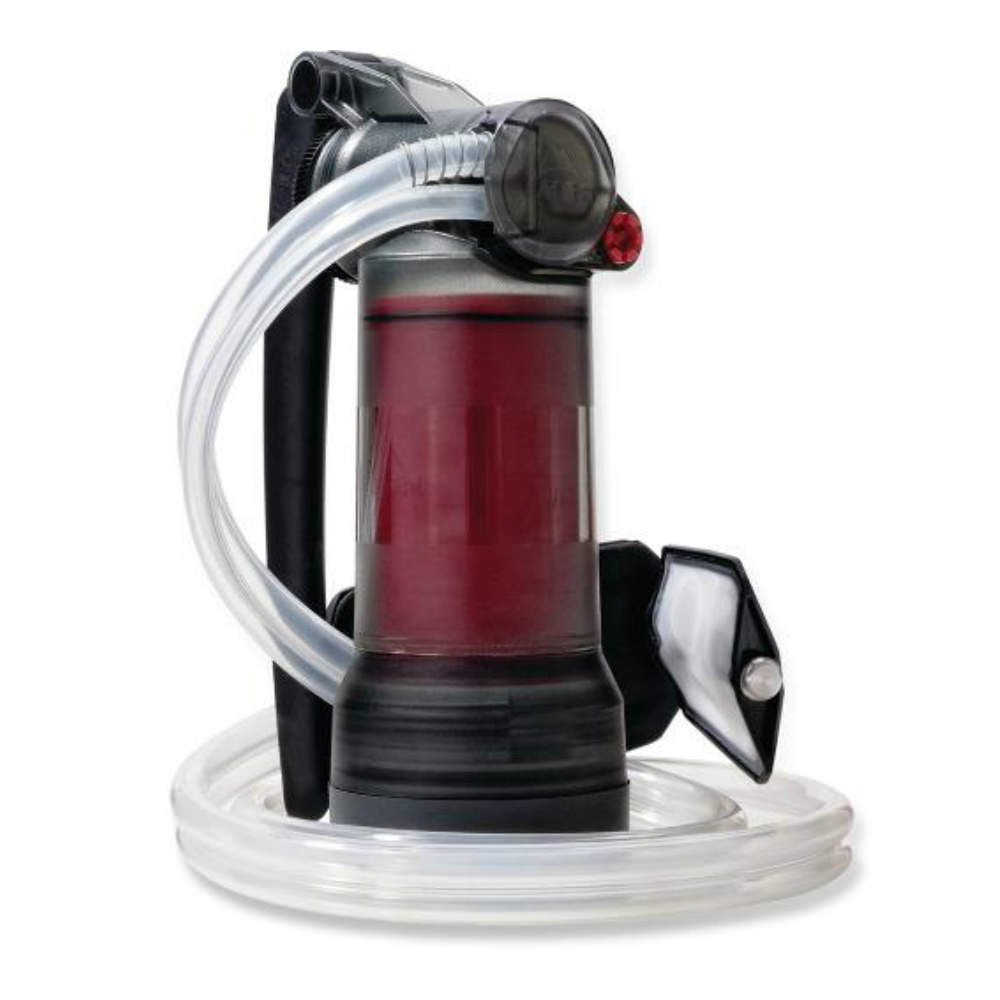
MSR Guardian
Best filter for purifying the worst of the worst water
Price: $390
Weight: 1 lb. 1.3 oz.
Pros
- Fast
- Military-grade quality
- Minimal maintenance
- Kills viruses
- Great flow rate
Cons
- Very heavy
- Very expensive
The MSR Guardian is a top-of-the-line pump purifier built for the harshest conditions. Since the Guardian is able to kill viruses, it’s particularly useful for international destinations.
It’s also “self-cleaning,” meaning it automatically backflushes with every stroke to keep its flow rate high, pumping fatigue down, and maintenance to a minimum.
Though it’s built to withstand many years of rugged use, the upfront cost of this purifier is pretty staggering. In addition, it’s too heavy to justify bringing on most of our backcountry trips.
That said, if you’re looking for best-in-class protection from a purifier that’ll pull clean drinking water from a murky mud puddle in India, the Guardian is your guy. For ease of use, it’s best when paired with a wide-mouth Nalgene bottle.
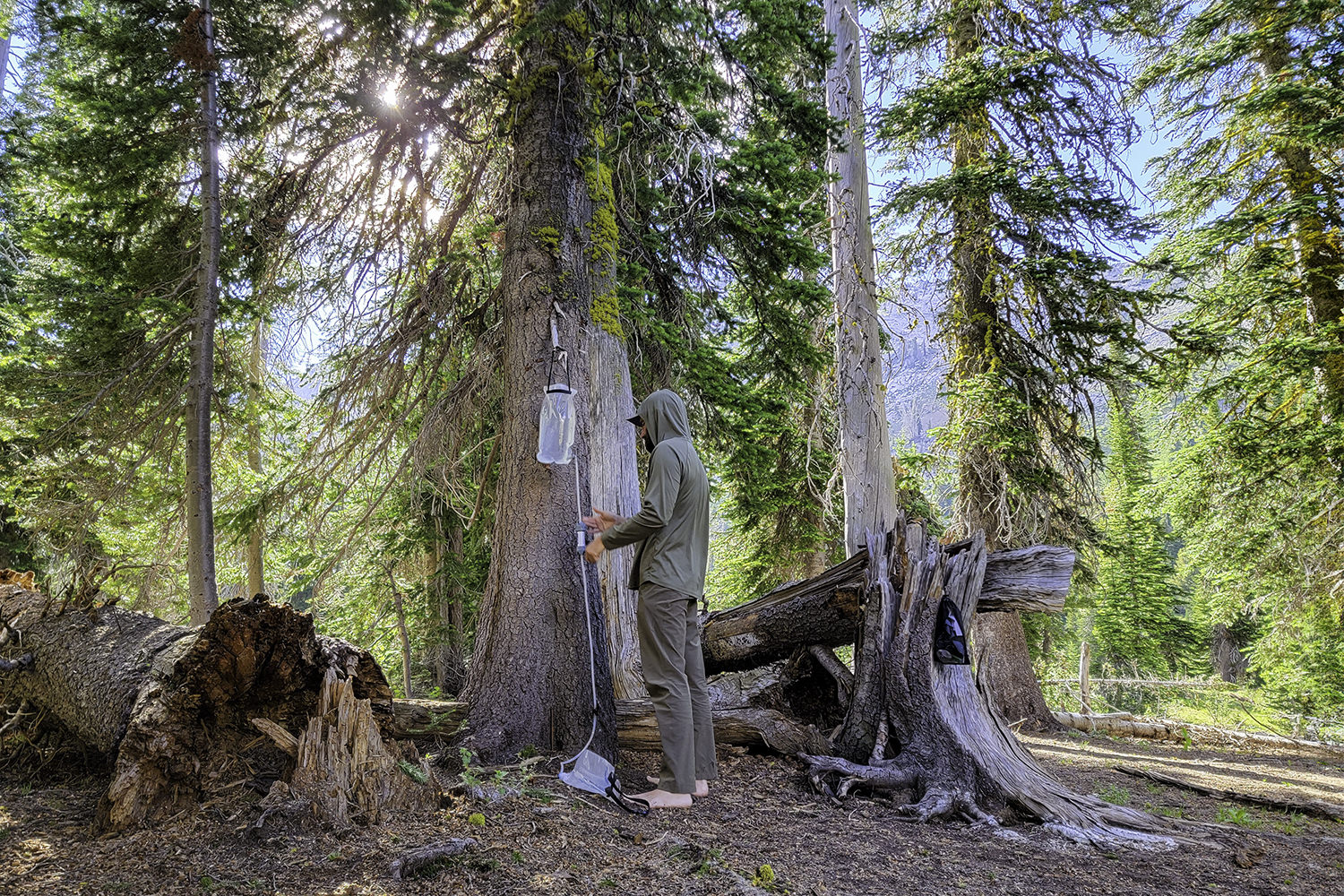
What’s Most Important to You in a Water Filter?
PRICE
The price of different filtration and purification methods vary widely, but the most important factor should always be getting the most effective and reliable option for your needs.
Chemical treatments tend to be the lowest cost options, squeeze and pump filters are typically a good value and are the most popular with backpackers, and UV water purifiers tend to be on the more expensive side.
Best budget backpacking water filters
Best value backpacking water filters
WEIGHT
Squeeze filters and chemical treatments are a lightweight and convenient way to get clean water in the backcountry. Squeeze filters are the most common option, since most backpackers find the occasional cost of replacement worth the weight savings over gravity and pump filters.
Pump filters and UV purifiers weigh more, but they don’t need to replaced as often.
Best ultralight backpacking water filters
Best lightweight backpacking water filters
Best heavy-duty backpacking water filter
EASE OF USE
You’ll need to treat water multiple times a day in the backcountry. If your purification method is obnoxious, you’re bound to get annoyed with it quickly. We always prioritize treatment options that are easy to use.
Chemical treatments, squeeze filters, and gravity filters (for groups) are usually the most convenient ways to get clean water, but UV purifiers are also simple to use as long as you keep the battery fresh.
Quickest & easiest backpacking water filters
Best water filter for small groups
FILTERING VIRUSES
Water purifiers remove or kill viruses, water filters don’t. Viruses are rarely a problem in North America, so most US backpackers don’t worry about treating them. If you’re going abroad or hiking in an area with heavy agricultural use, you’ll want a treatment method that protects against viruses.
Best water purifiers for backpacking
Critical Water Treatment Considerations
LEAVE NO TRACE
It’s gross to think about, but most backcountry water contamination is a result of feces – either from humans or animals. That’s why you can’t talk about clean water without talking about LNT. When you need to crap in the woods, ALWAYS dig a cathole 6-8 inches deep and do your business at least 200 feet from any water source. Use toilet paper sparingly and either bury it thoroughly or pack it out in a Ziploc bag. We use a cheap, lightweight snow stake for digging and it works great. C’mon people, you love nature, that’s why you’re out there. So please put in a little effort to keep things clean for generations to come.
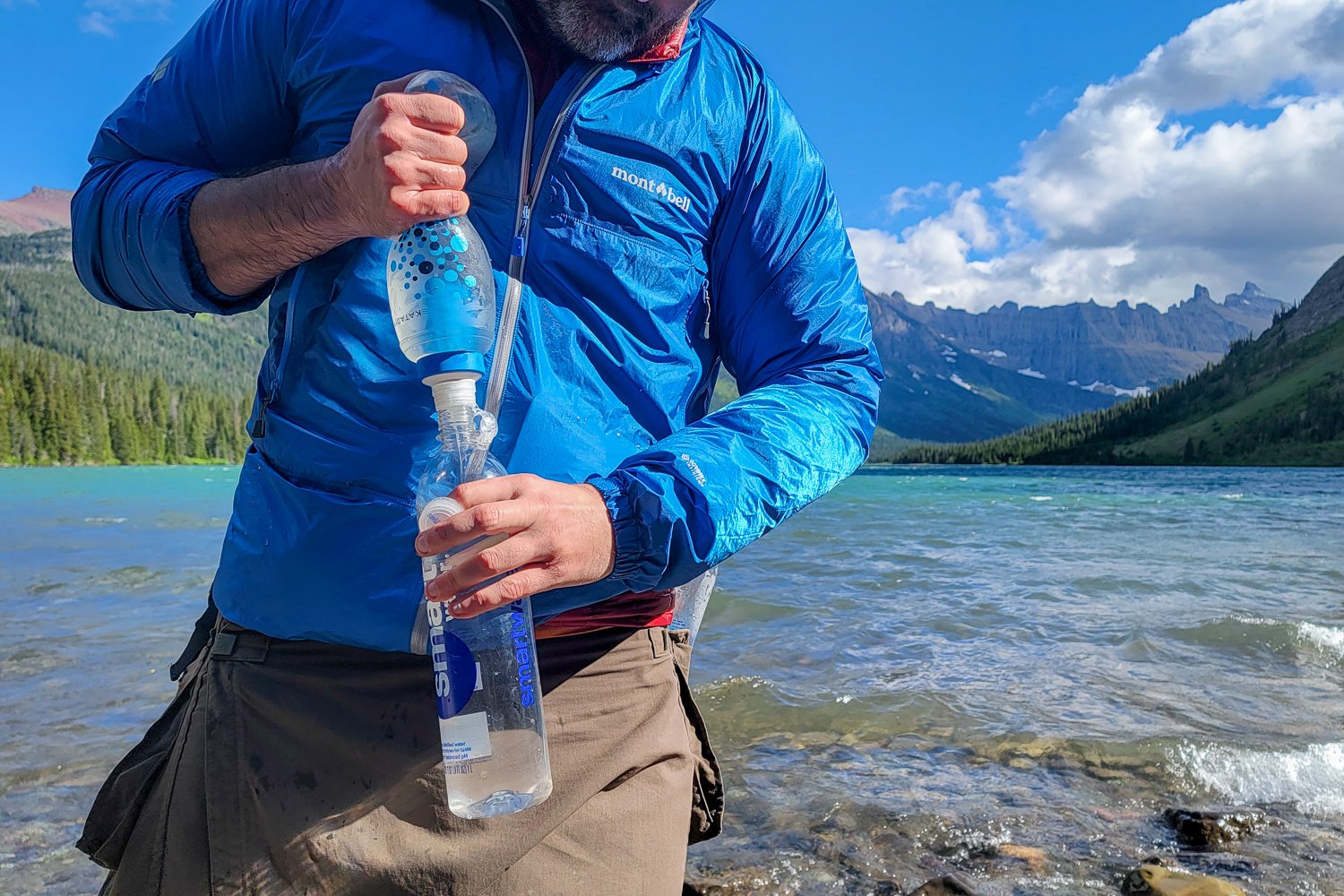
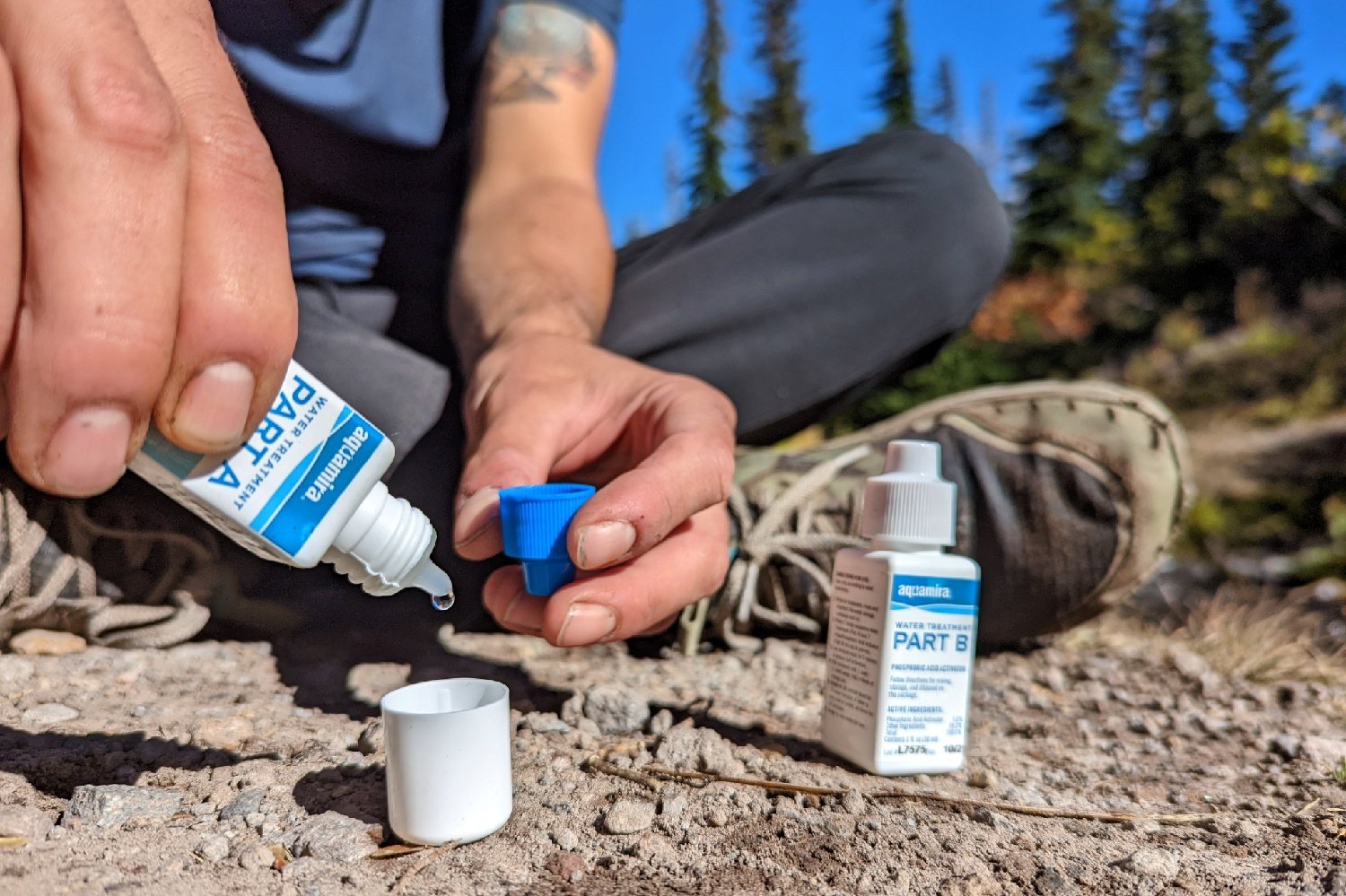
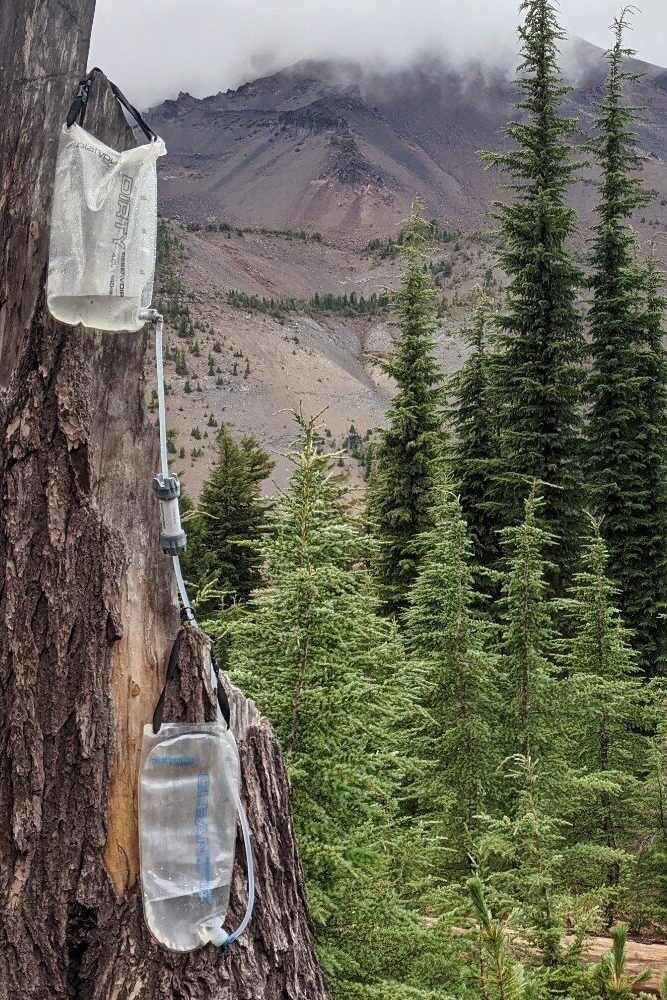
BACKUP METHOD
Just like any important backcountry tool, you’ll want to have a backup plan if your water treatment method fails. Water filters can clog, squeeze bags can break, and UV purifier batteries can die. So regardless of your treatment method, we always recommend bringing backup chemical treatment pills. We’ve had to rely on backup pills several times and have always been happy to have them.

JUDGE THE SOURCE
Choosing clean water sources is one of the best ways to avoid contamination in the backcountry. When choosing a water source, look for clear, cold flowing water. Medium size streams are usually ideal. Lakes can be a good choice as well, but sediment and bacteria do tend to build up around shorelines, so flowing water is preferable. Feces tends to be the biggest culprit in water contamination, so always avoid areas with lots of human or animal activity (pastures or meadows for example). Rain can make matters worse by washing contaminants and sediment into water sources. Snow should always be boiled for about one minute or melted and treated, because it can contain contaminants as well.
PRE FILTERING
Small bits of organic matter (leaves, algae, etc.) usually pose no threat, but you can use a pre-filter (bandana, pantyhose, etc.) to strain out debris before treating your water. When water sources are clear, we don’t bother with pre-filtering, but we often bring a small clipping of pantyhose just in case. Pre-filtering will make any water treatment process more effective and will extend the life of your water filter.
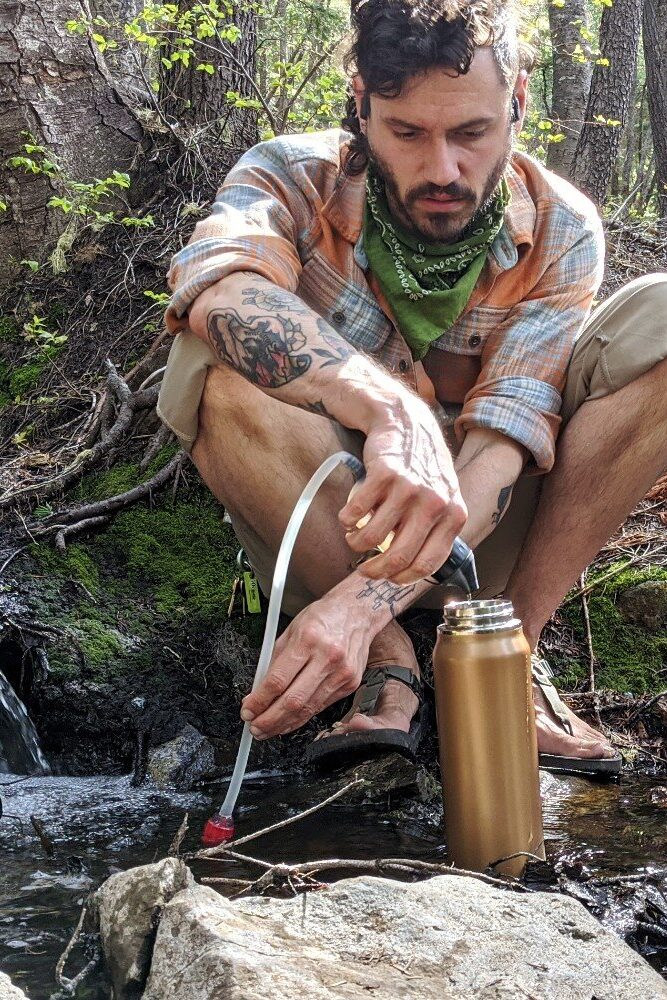
WASH YOUR HANDS
Many people blame water sources when they get sick in the backcountry, but improper hygiene is often the real culprit. A small bottle of hand sanitizer should be considered essential for any backcountry trip. Use it after bathroom breaks and before eating.
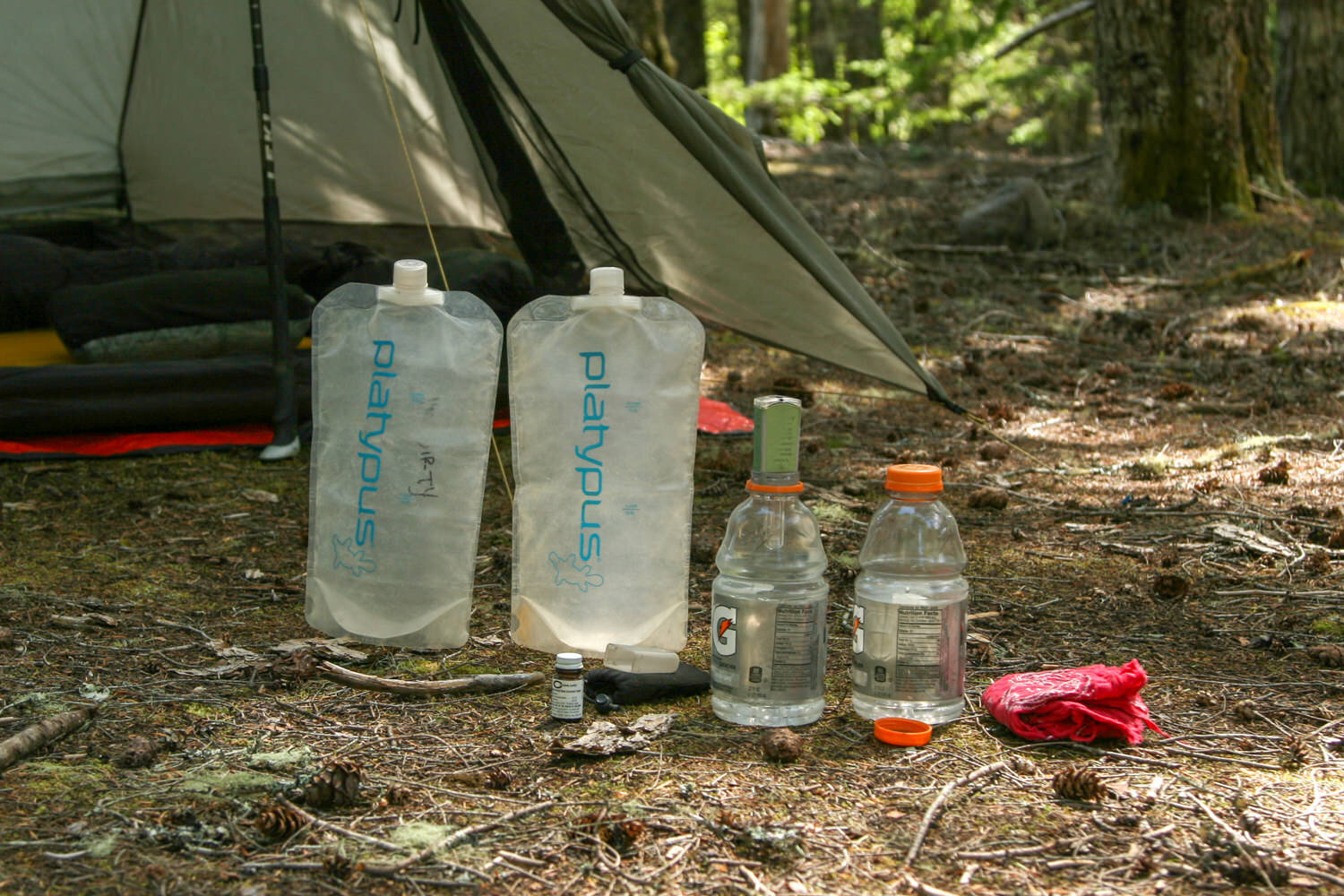
BOTTLES & BLADDERS
We use small-mouth plastic bottles (ex: smartwater) on the majority of our backpacking trips. They’re lightweight, affordable, and they last a long time. When we need to carry lots of water over long dry stretches, we use trusty Platy Bottles to store water in our packs. Check out some of our other favorite water bottle options on our Best Water Bottles list. Some backpackers like to use hydration bladders, but we generally find them to be too much hassle and we’ve had a few leak in our packs.
Understanding Treatment Types
CHLORINE DIOXIDE CHEMICAL TREATMENT
- Works by killing the bad stuff with chemical drops or pills
- Kills bacteria, protozoa & viruses
- Very lightweight & easy to use
- Relatively affordable (drops normally cost less than pills)
- Relatively foolproof (no clogging, breaking, or maintenance)
- 4 hour wait time required (more info below)
Note: There are other chemical treatment options, but we recommend chlorine dioxide drops or purification tablets because they’re effective against cryptosporidium, and most others are not.
Chlorine Dioxide Wait Time: In order for chlorine dioxide to be effective against cryptosporidium, a 4 hour wait time is required. Giardia, bacteria, and viruses are all killed in about 30 minutes, but crypto takes longer to kill. When we judge a backcountry water source to be clean (read “judge the source” section above), we normally just wait the 30 minutes. If we don’t trust the water source, we wait the full 4 hours. Obviously, this is a personal choice that’s up to you.
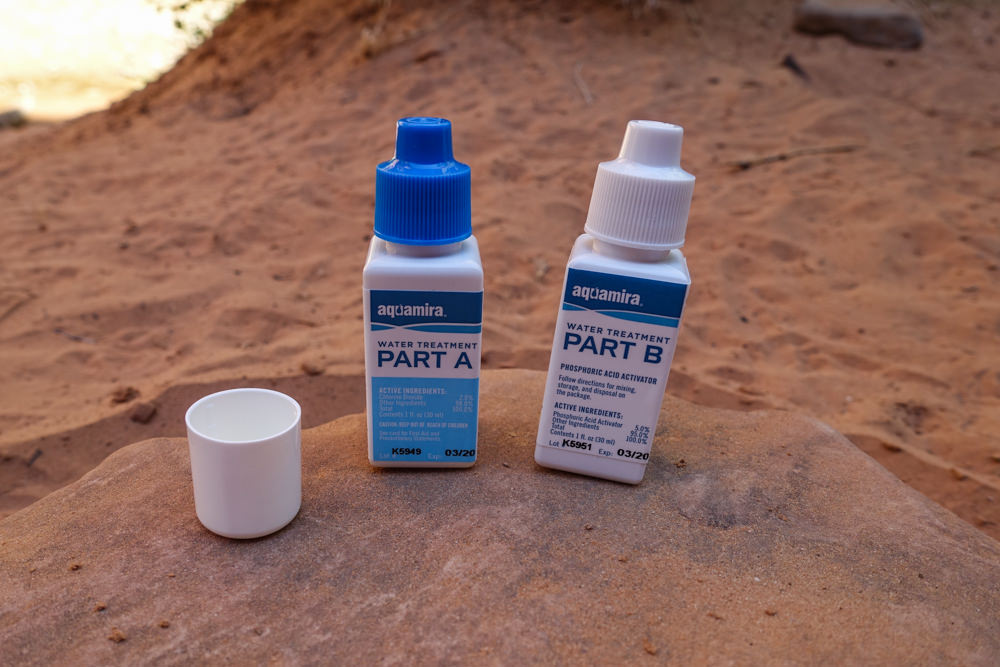
WATER FILTERS
- Works by filtering out the bad stuff & letting clean water pass through
- Allows you to drink clean, cold water right away
- Many filters require work (pumping, squeezing, etc)
- Gravity filters don’t require much effort & can be good for groups
- Filters are not effective against viruses, but purifiers are (read “viruses” section above)
- Prices vary – pump & gravity filters tend to be more expensive than squeeze filters
- Weights vary – pump & gravity filters tend to be heavier than squeeze filters
- Some maintenance normally required (backflushing, cleaning, etc.) to keep up flow rates
- The flow rate of nearly every water filter will decrease with use – the dirtier the water source, the faster your filter’s flow rate will decrease; eventually needs to be replaced
- Freezing will break most filtration units
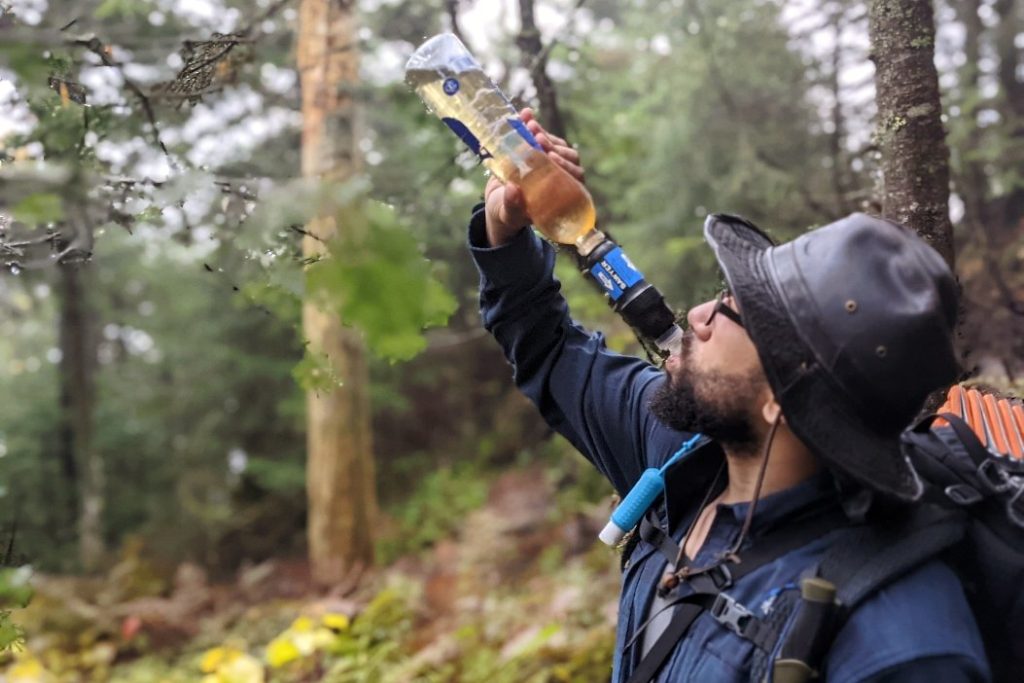
UV LIGHT PURIFIERS
- Works by sterilizing the bad stuff with ultraviolet light
- Kills bacteria, protozoa & viruses
- Allows you to drink clean, cold water right away
- Requires minimal effort & works quickly
- UV purifiers tend to be more expensive
- Requires batteries & could malfunction in the field
- Clear water required for UV treatment; not a good choice for murky sources
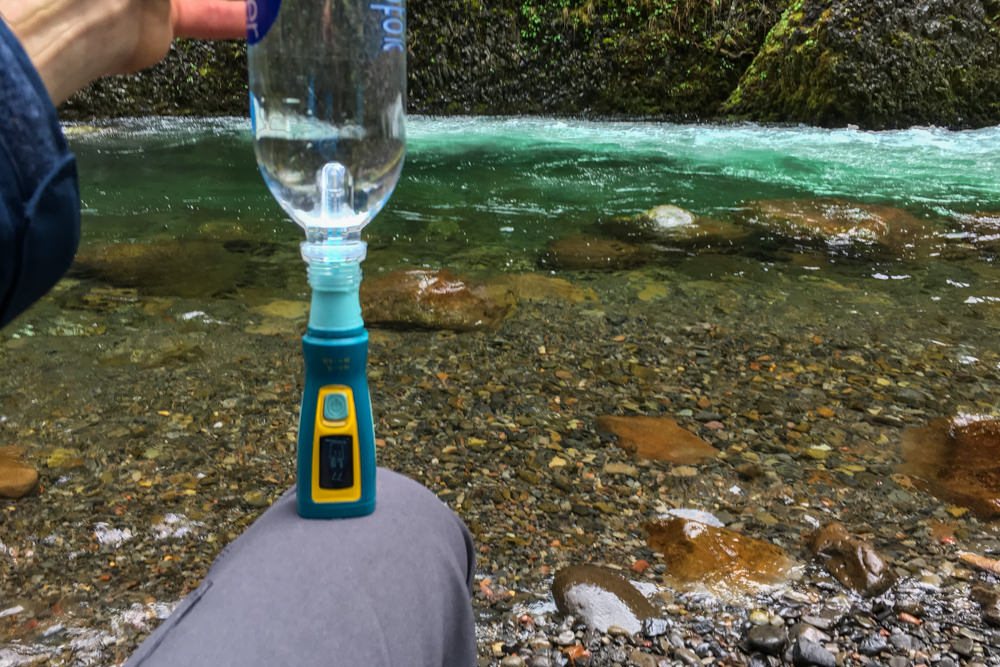
BOILING WATER
- Boil water for 1 min (or 3 min over 6,500 feet) to kill bacteria, protozoa & viruses
- Requires extra stove fuel & cooling time
- Not a primary treatment method, but useful when you’re already cooking
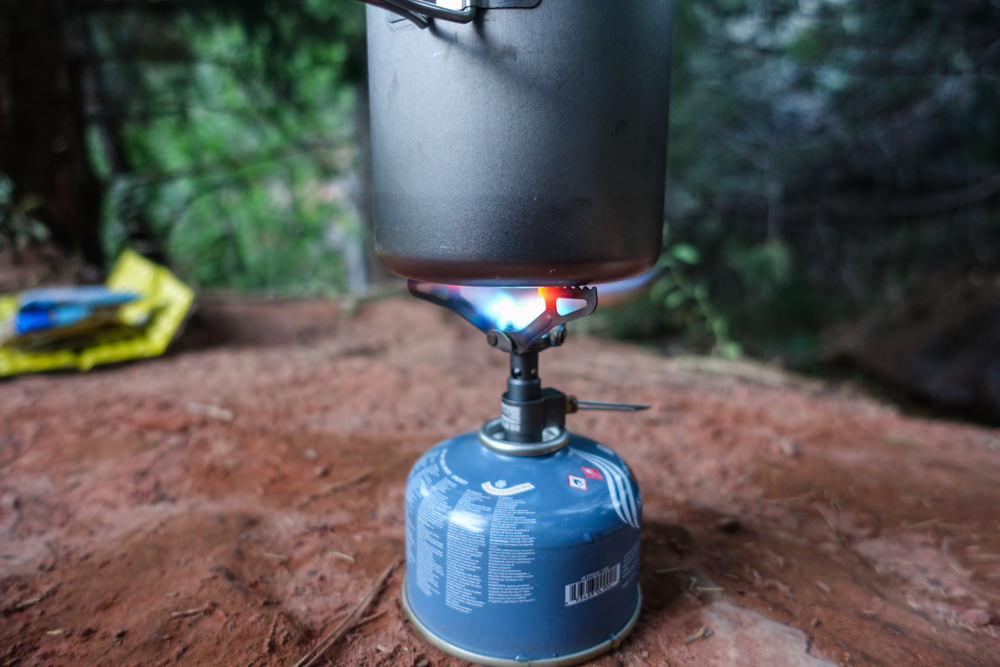
Honorable Mentions
The following water filters didn’t make our final list, but they’ve still got a lot of good things going for them. You never know, one of these water filters might be perfect for you:
LifeStraw Peak Squeeze – This is another compact and convenient squeeze filter. The reservoir is durable and we like that the filter cartridge can be used in multiple ways. That said, it weighs a little more than other squeeze filters on the market (3.9 oz.), and its flow rate didn’t blow us away. There are a lot of things going for the Peak, but ultimately, we prefer the designs of the Sawyer Squeeze, Katadyn BeFree, and Platypus QuickDraw squeeze filters.
Katadyn Hiker Pro Clear – This filter can pull water from tough to reach sources, which can often be helpful in the backcountry. Comparing cost, weight, and ease of use, we prefer more convenient treatment methods (ex: GravityWorks, Steripen Ultra) and lightweight, affordable systems (ex: Chlorine Dioxide, MSR Trail Shot, Sawyer Squeeze) over the Hiker Pro.
Lifestraw Peak Water Filter – A very affordable, lightweight filter that’s useful for trail running and quick backpacking trips. Our main gripe with the LifeStraw is that you have to lay on the ground to use it or fill your reusable bottle with dirty water.
Grayl Ultrapress – The Grayl is a purifier, so it’s great for protection against viruses in tap water on international trips. We like that it helps cut down on plastic waste and we find it far more convenient and cost effective than buying a bunch of water bottles. The filtration unit on the Grayl is only rated for 300 uses (40 gal/150 liters) before you’ll need a replacement cartridge.
